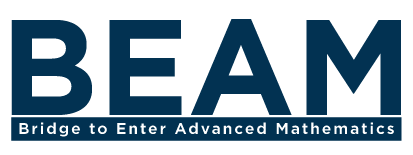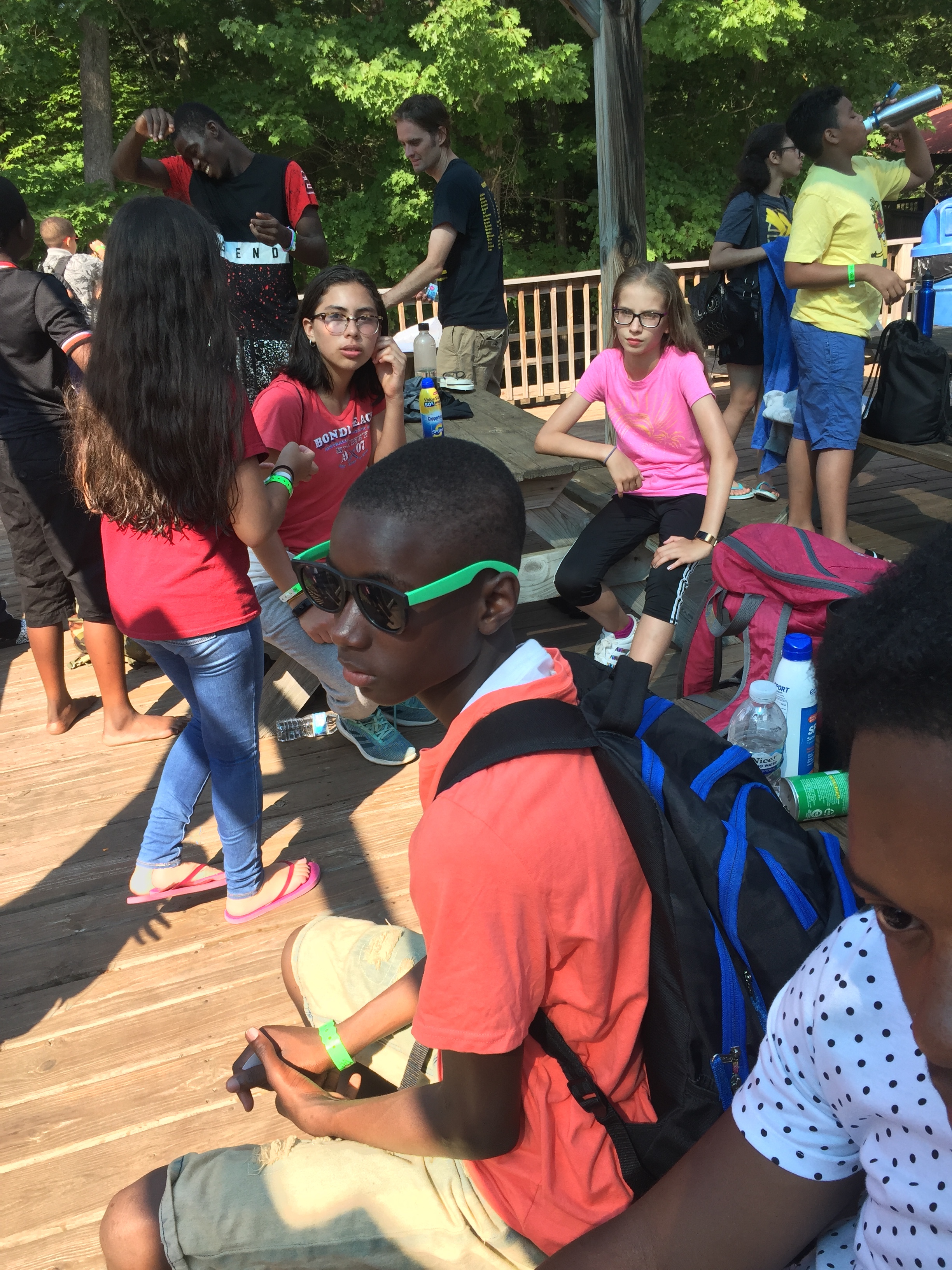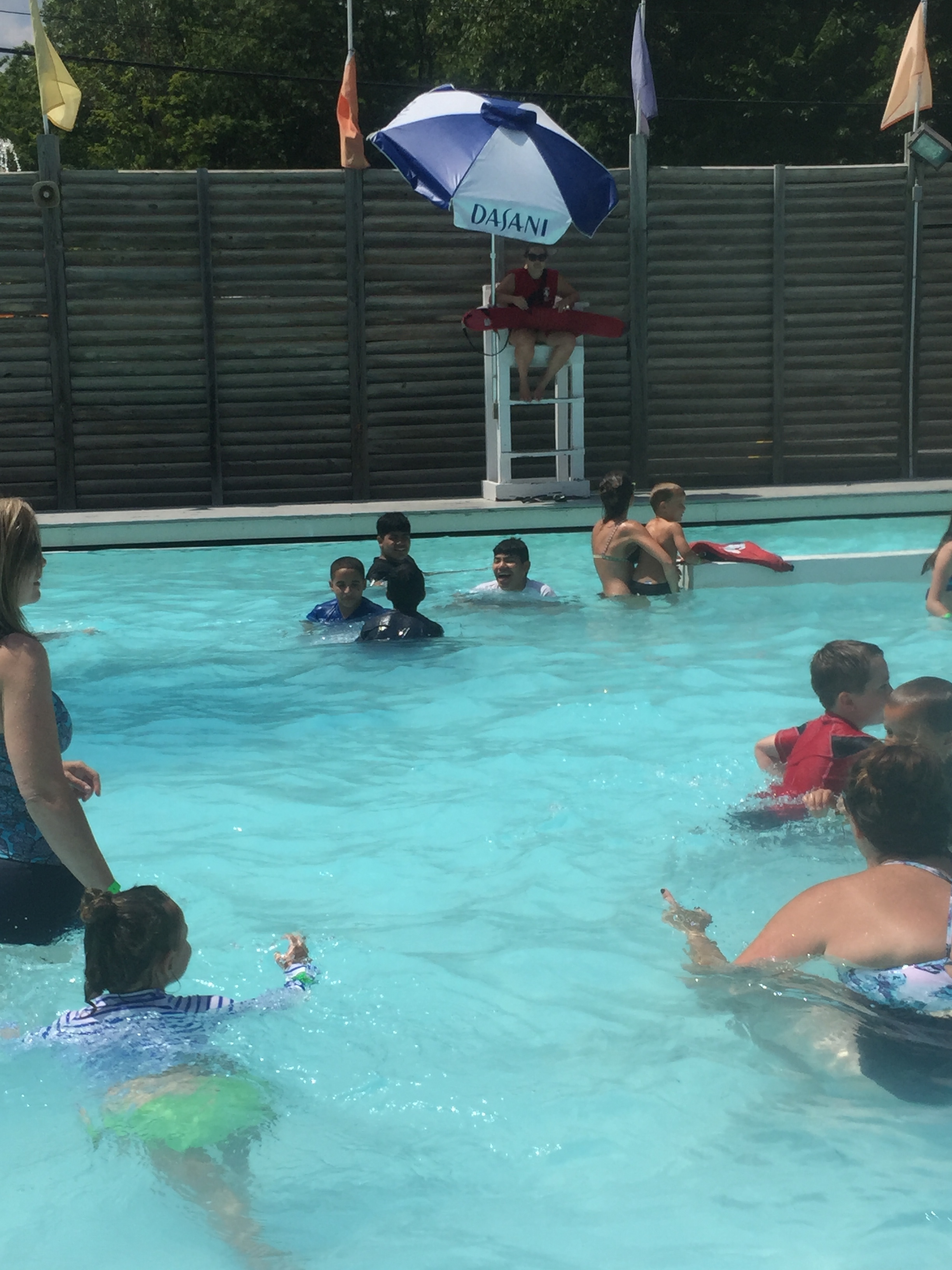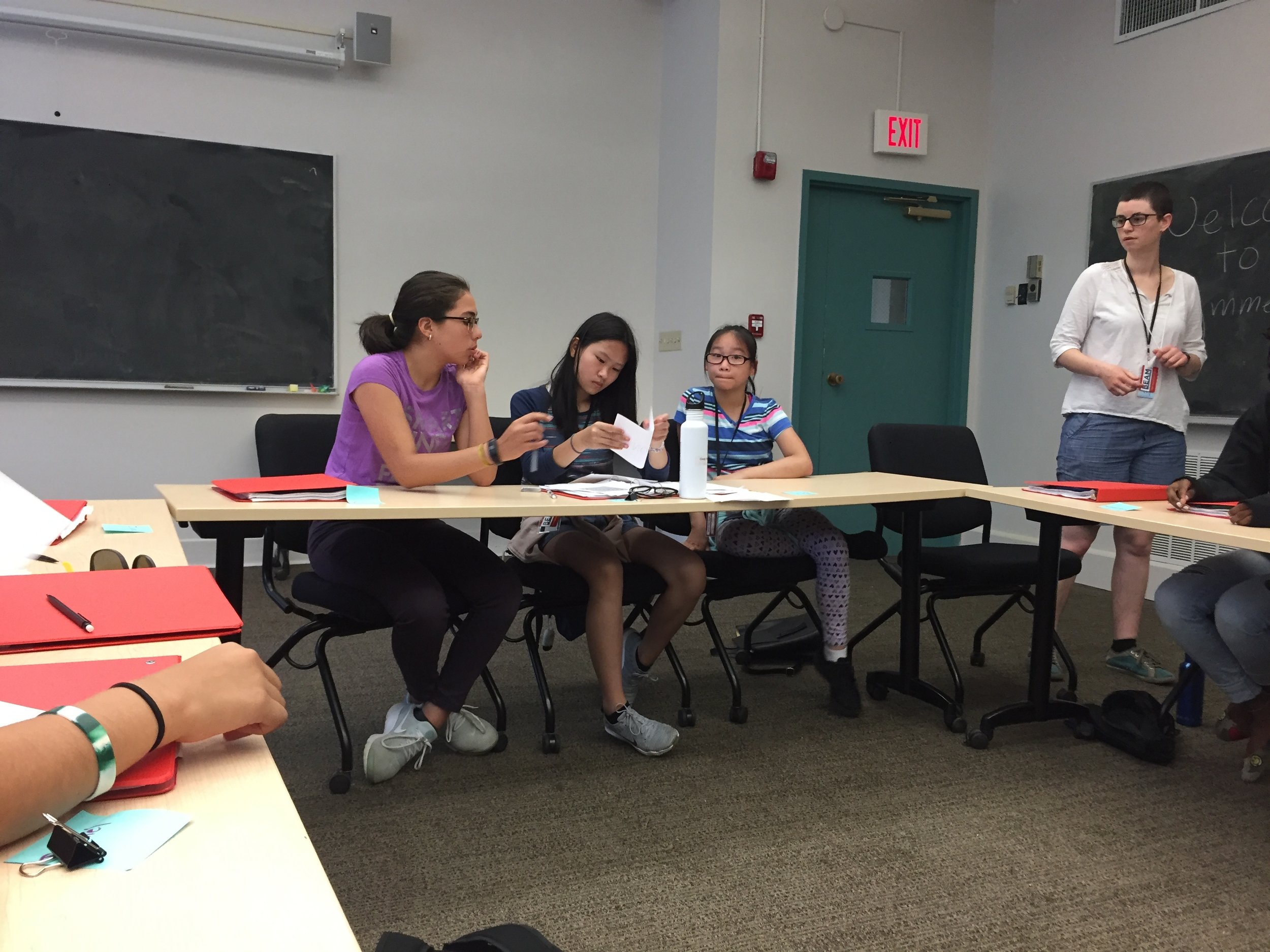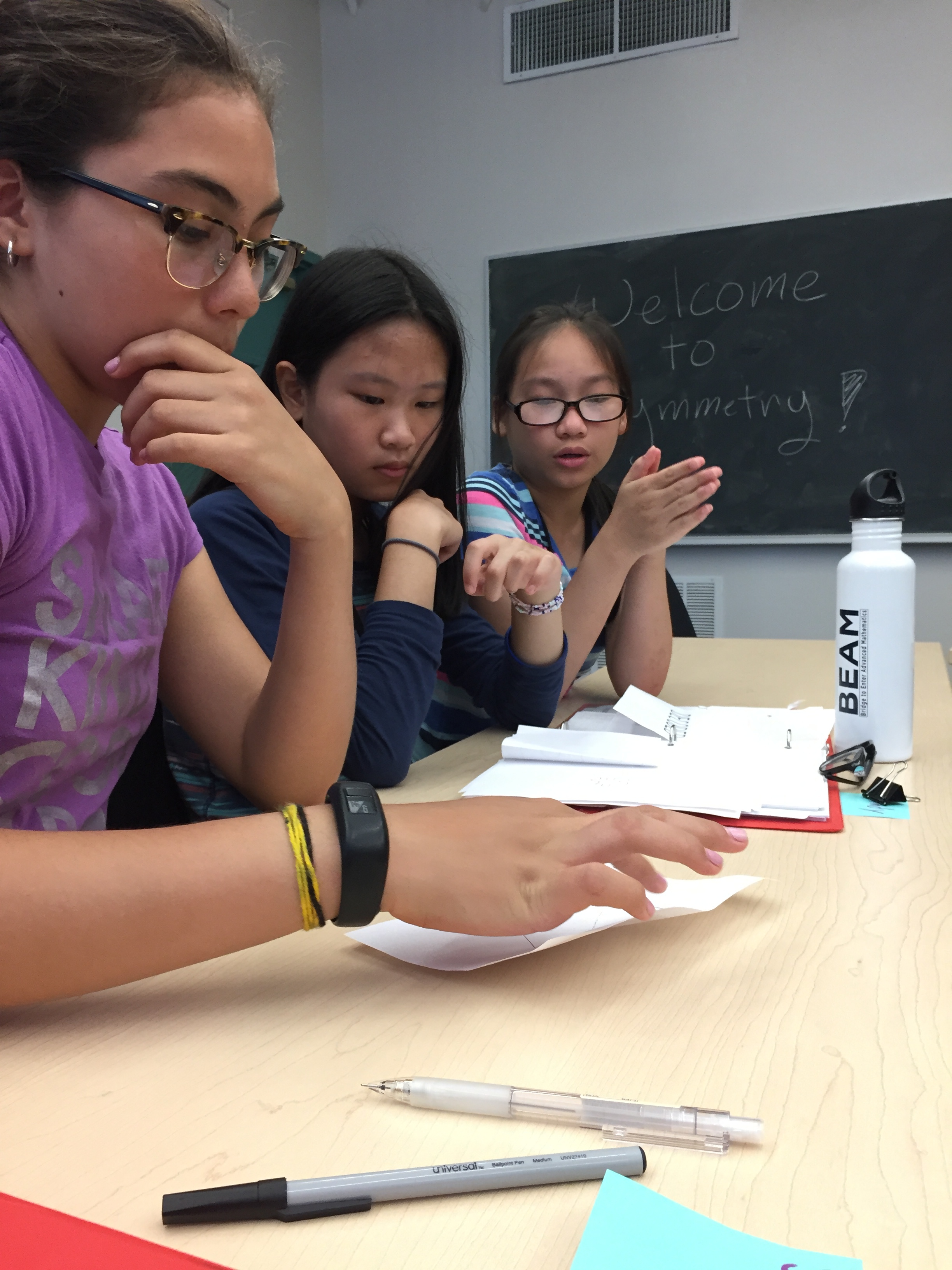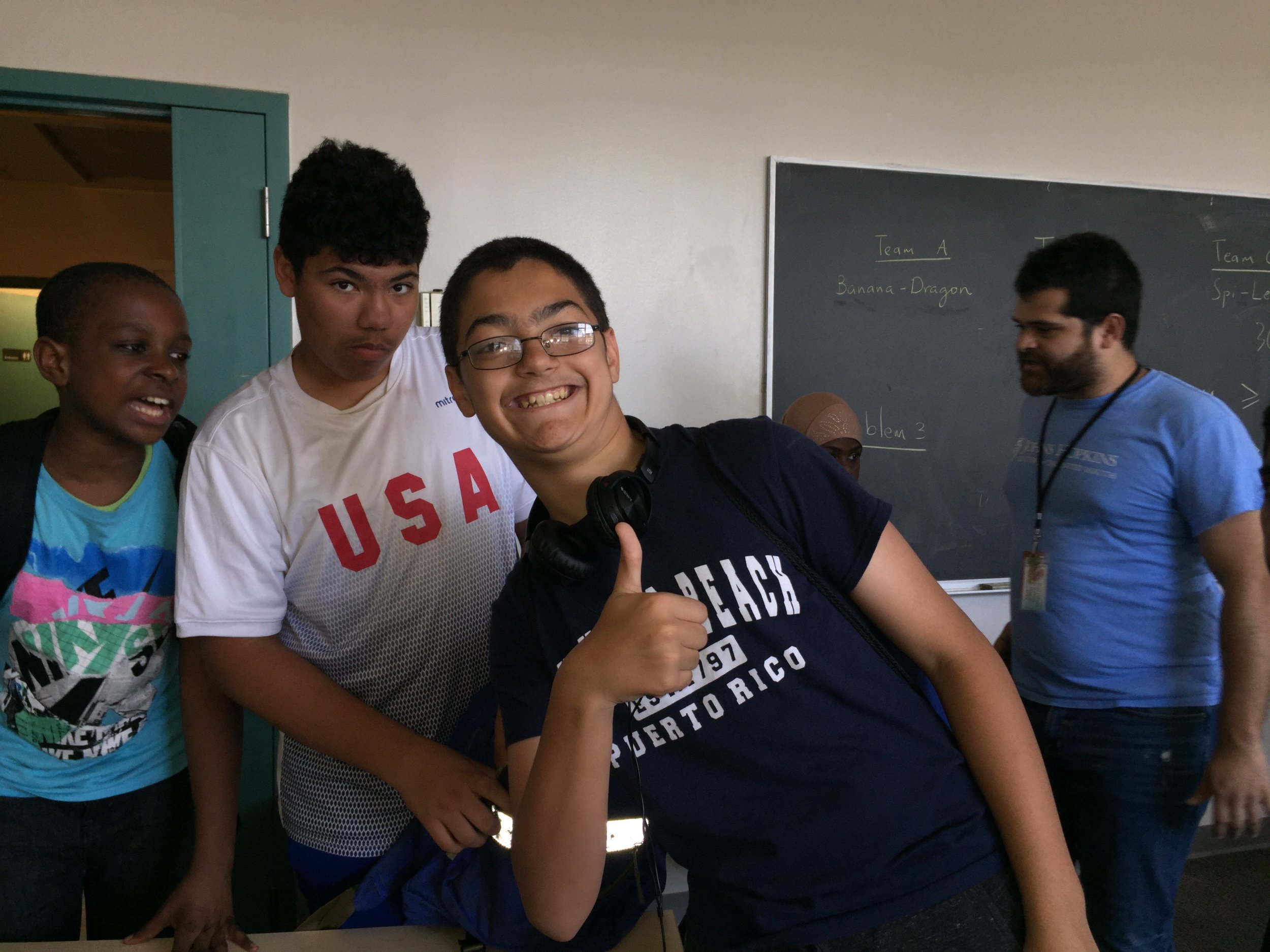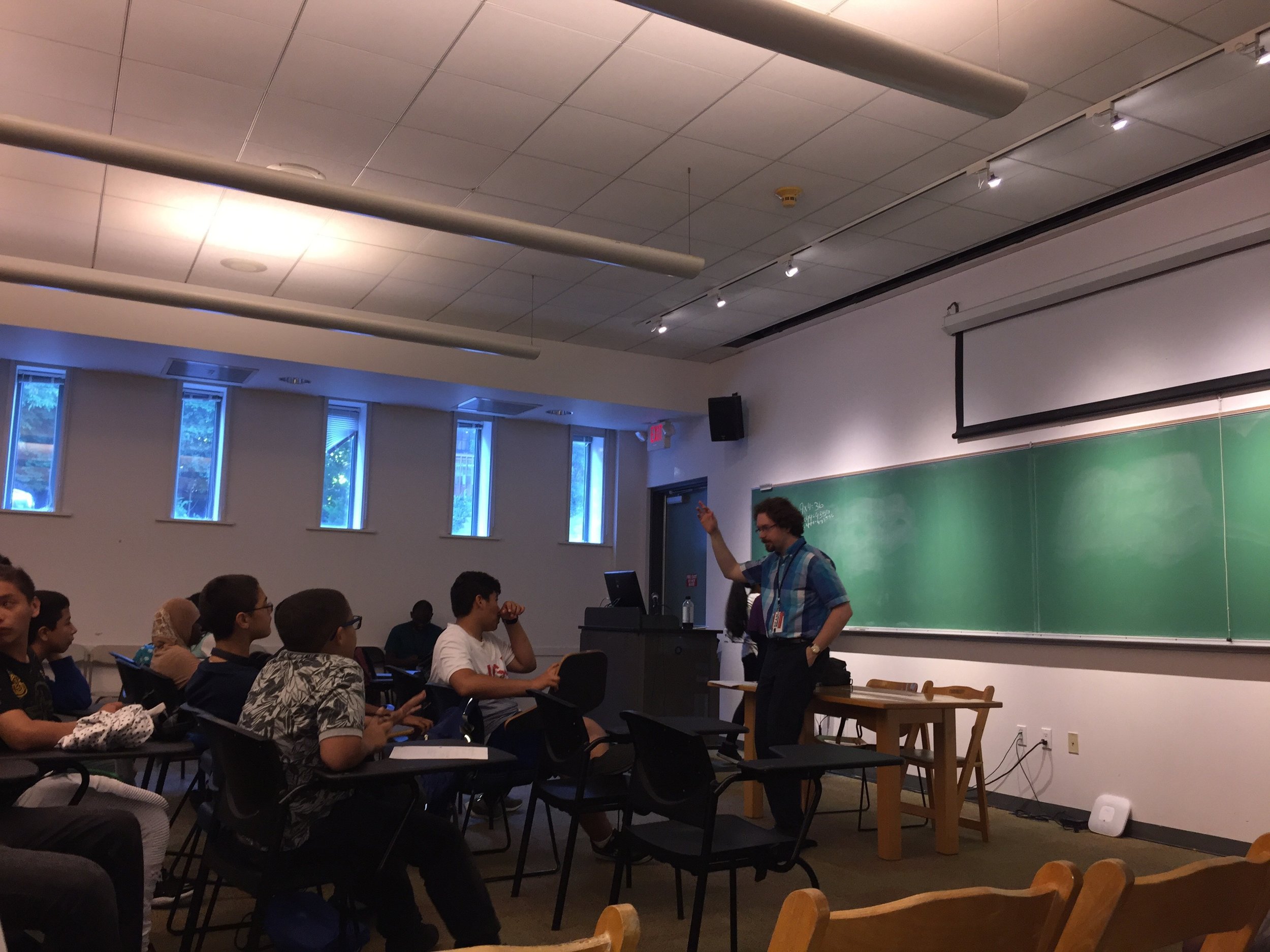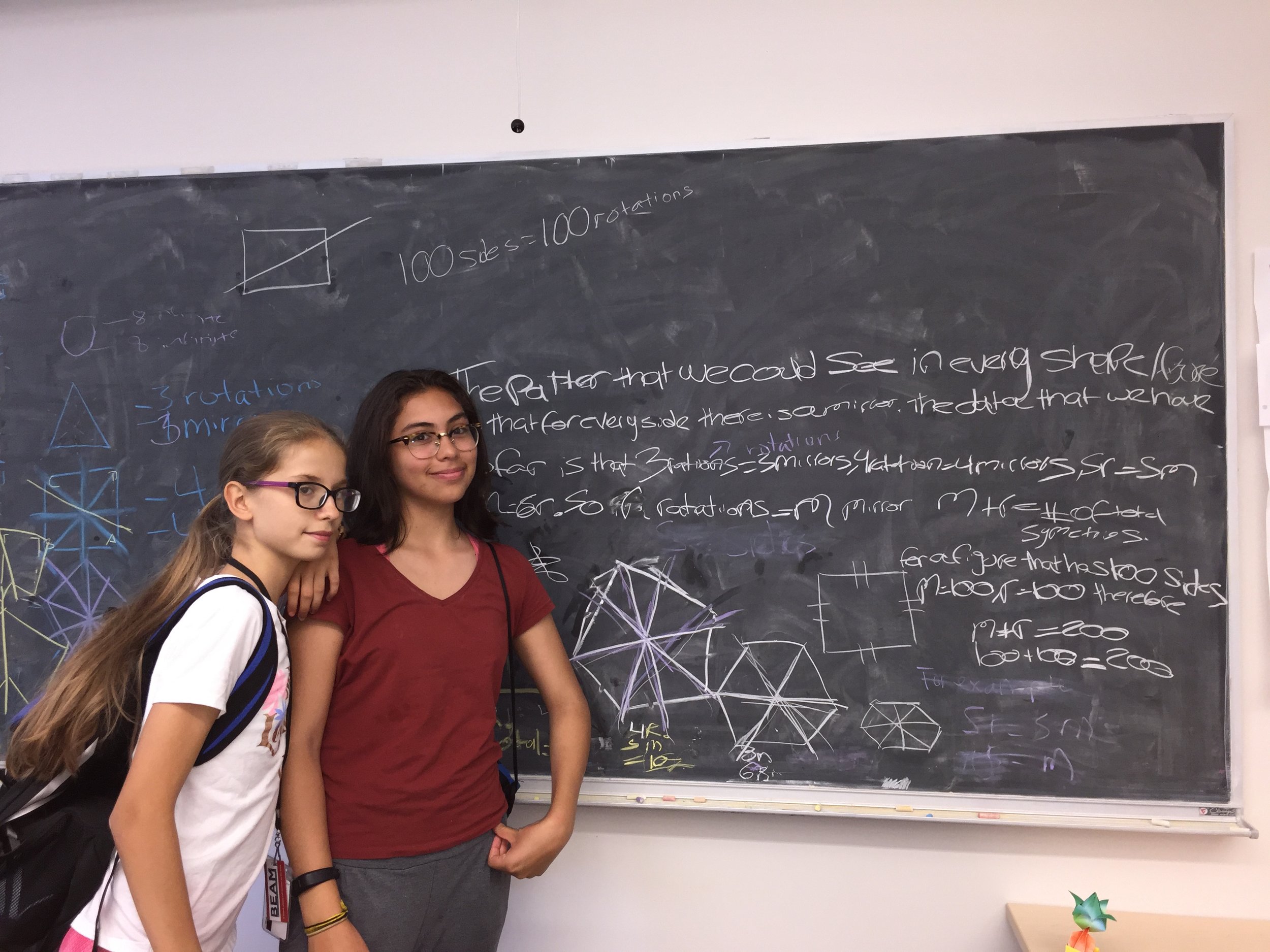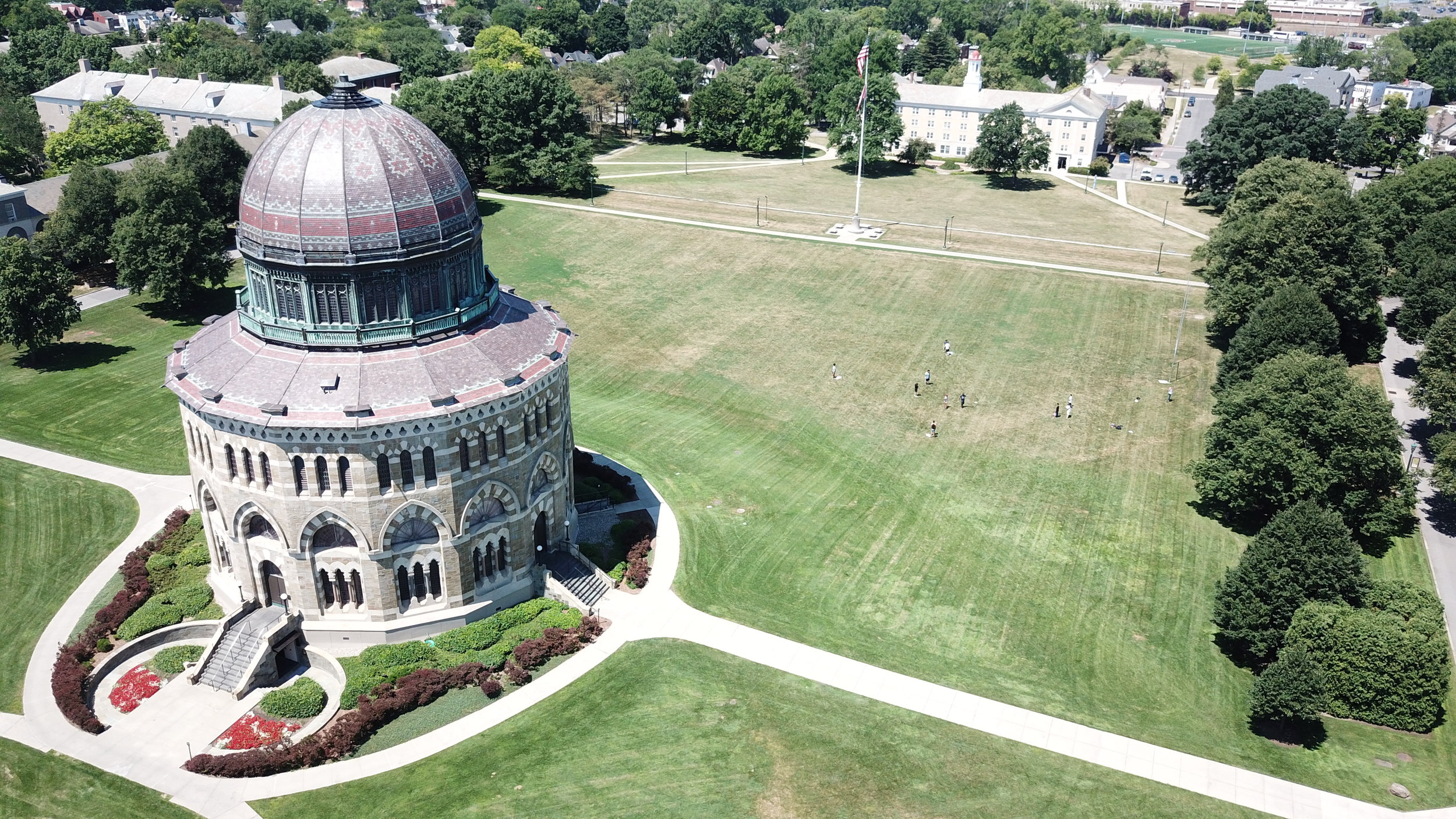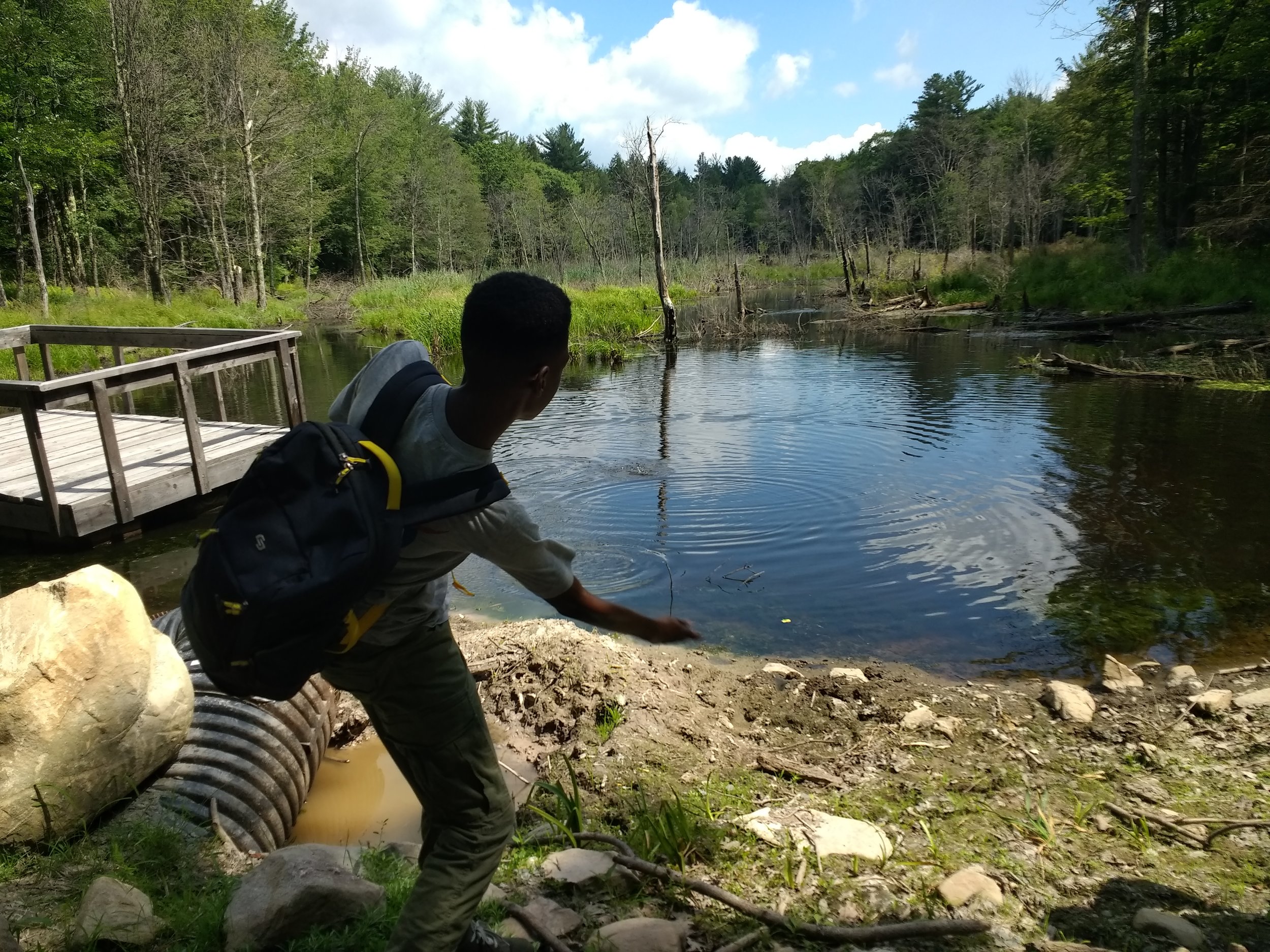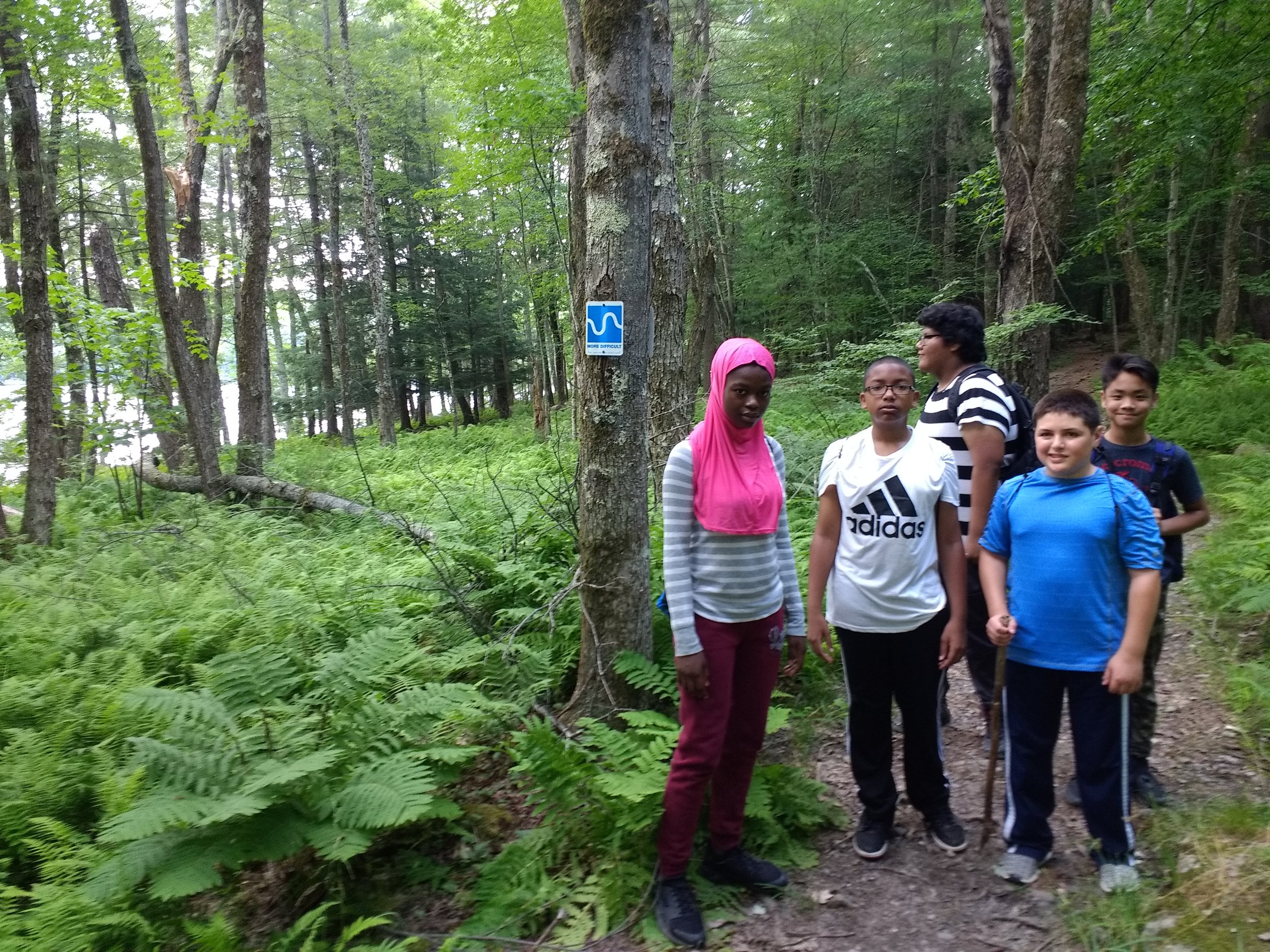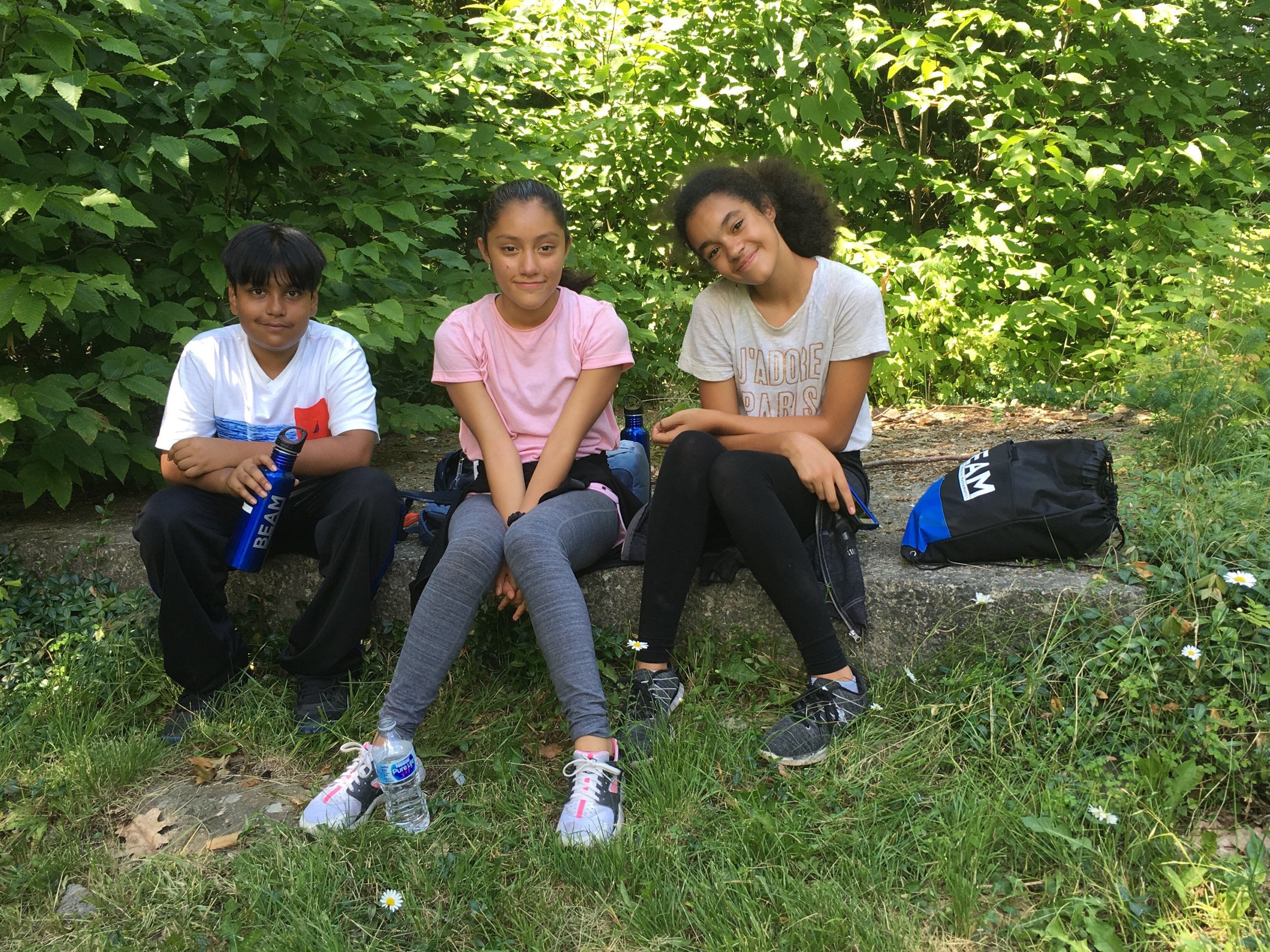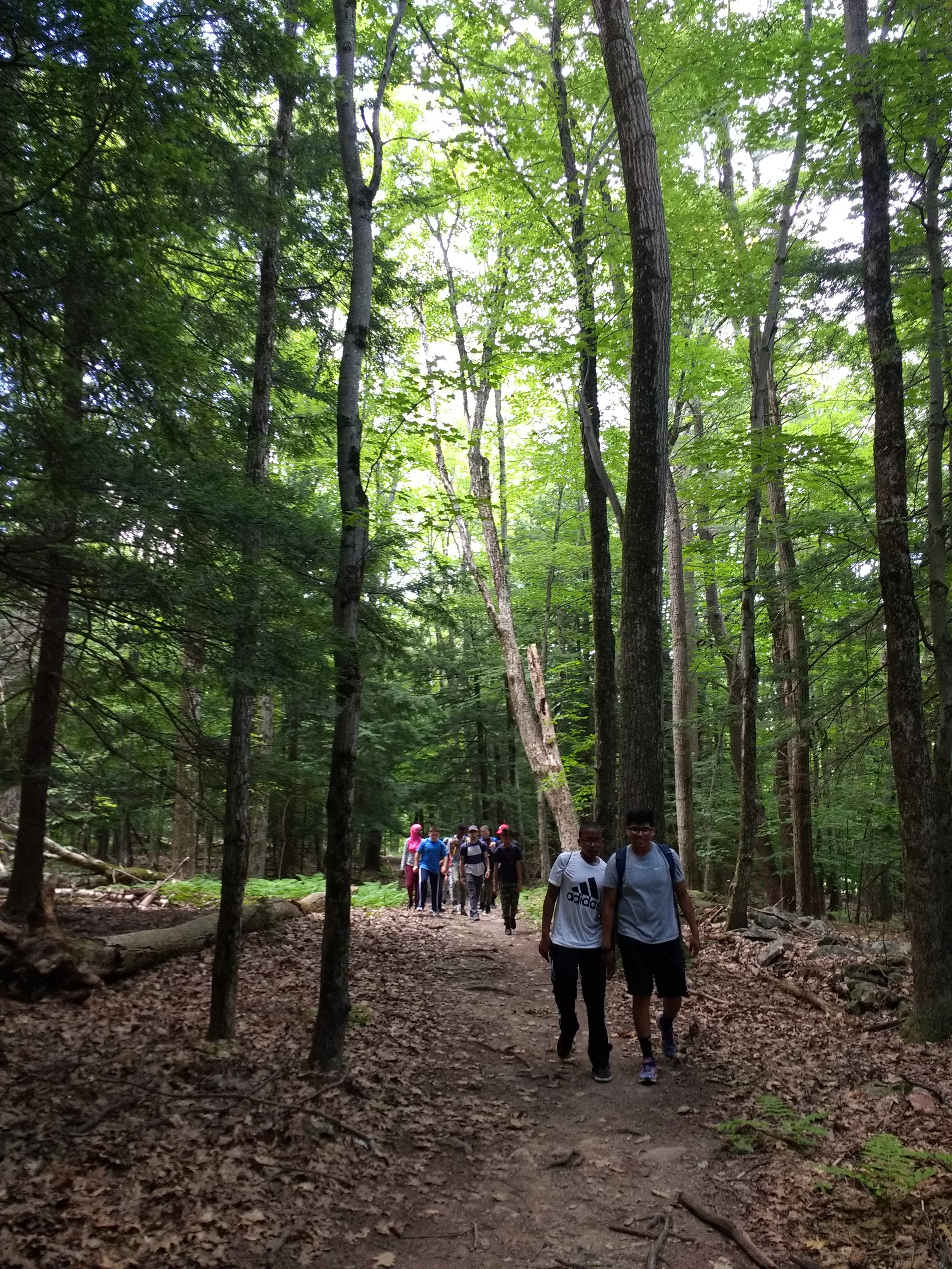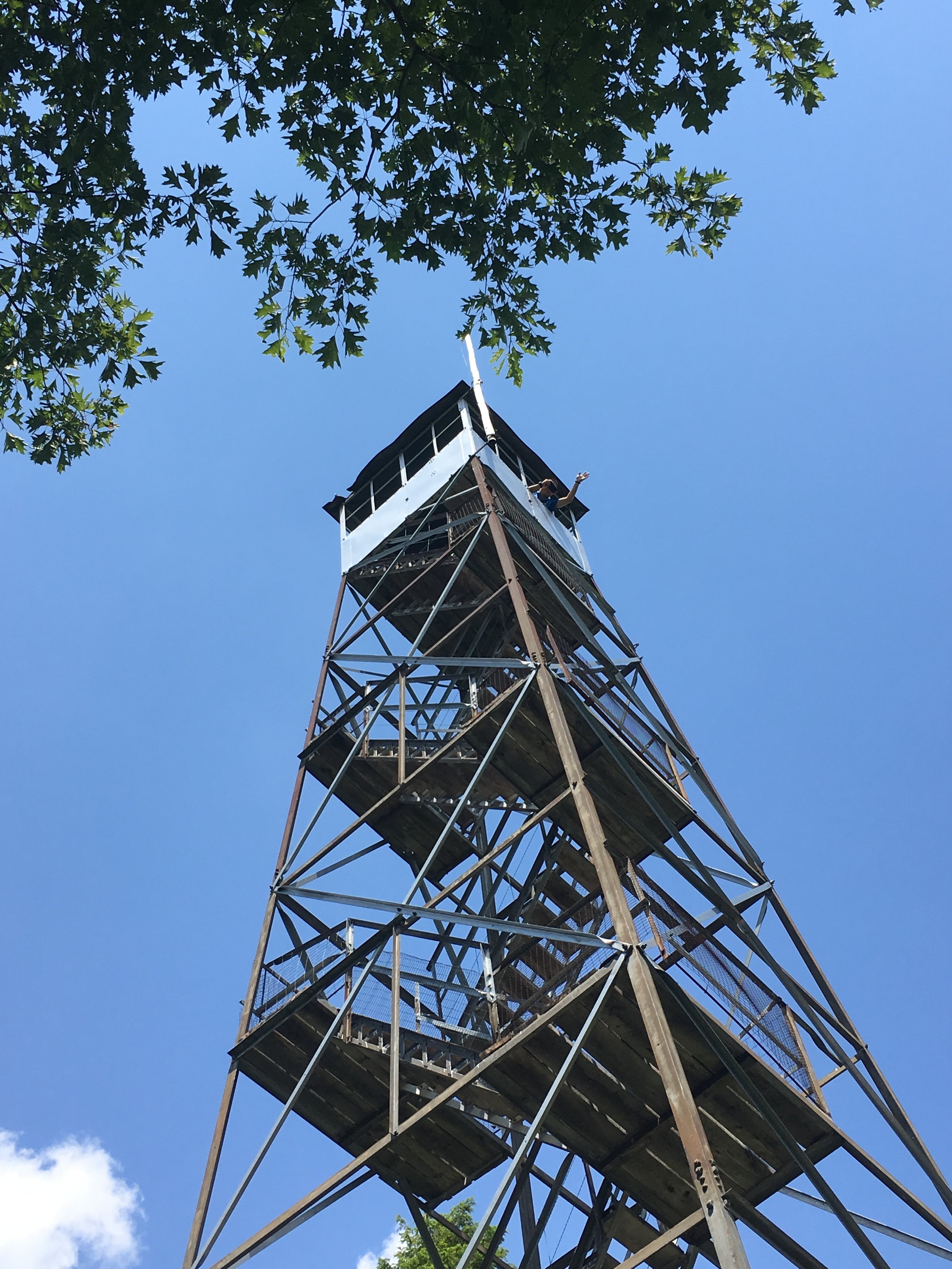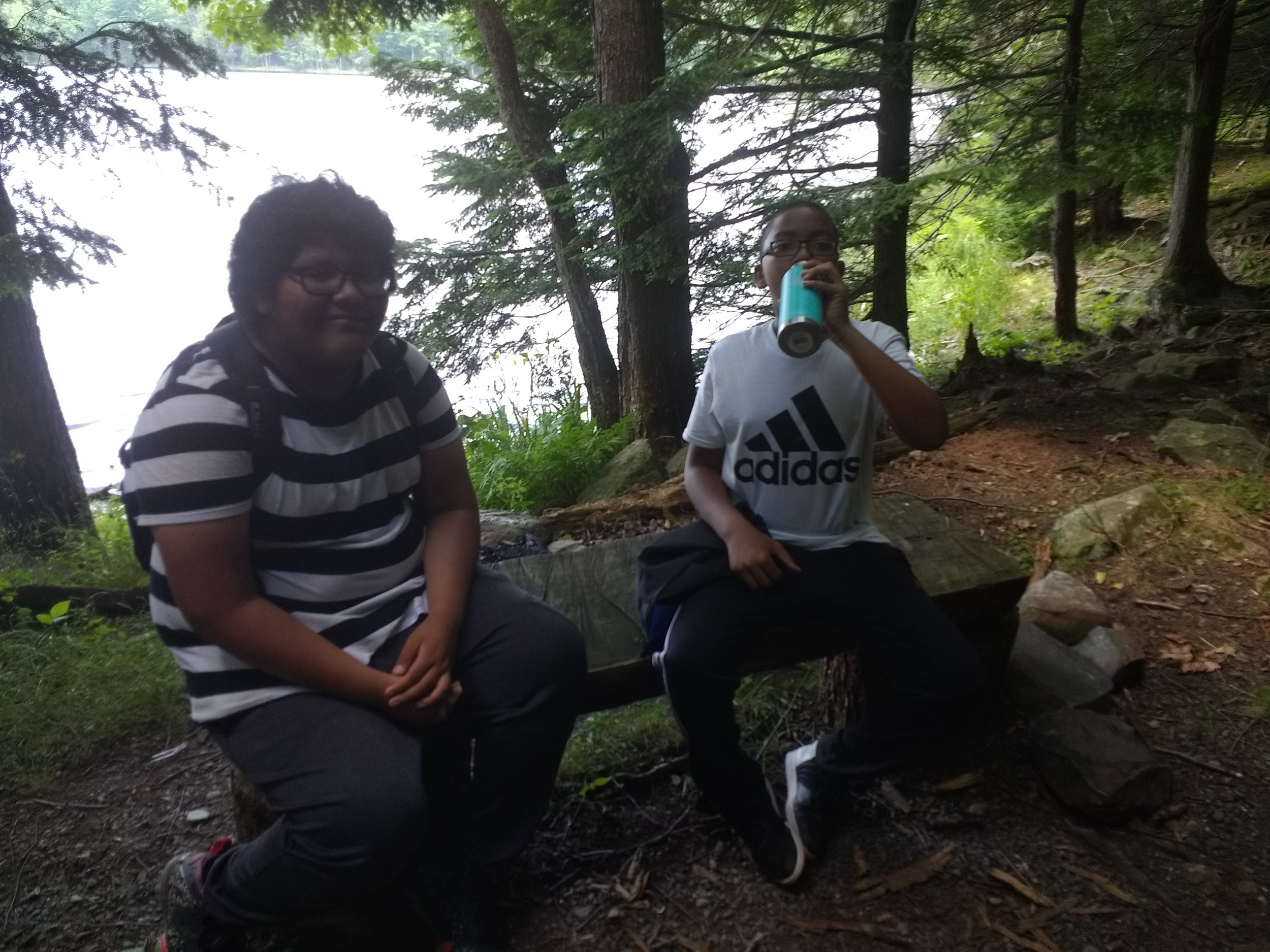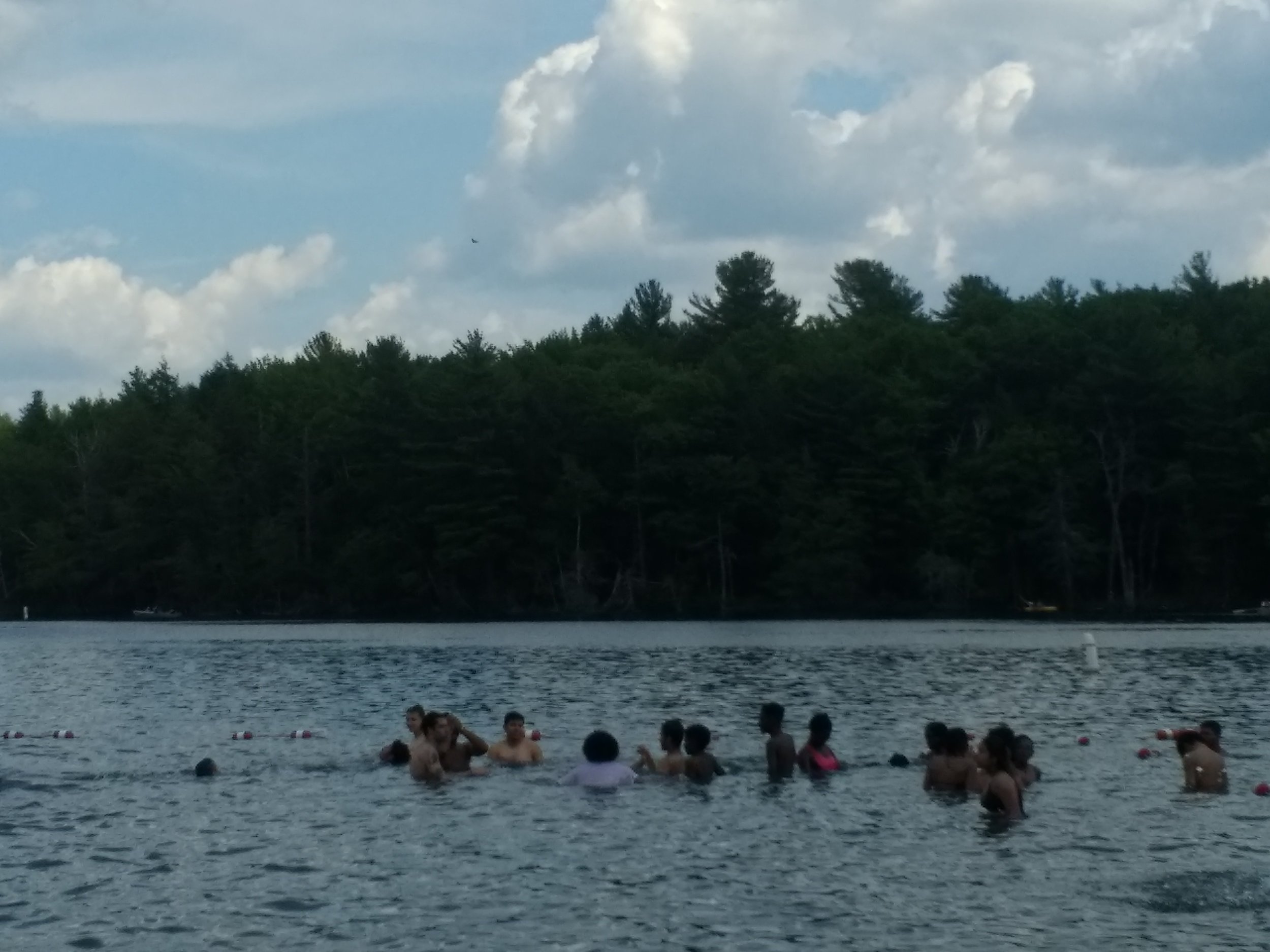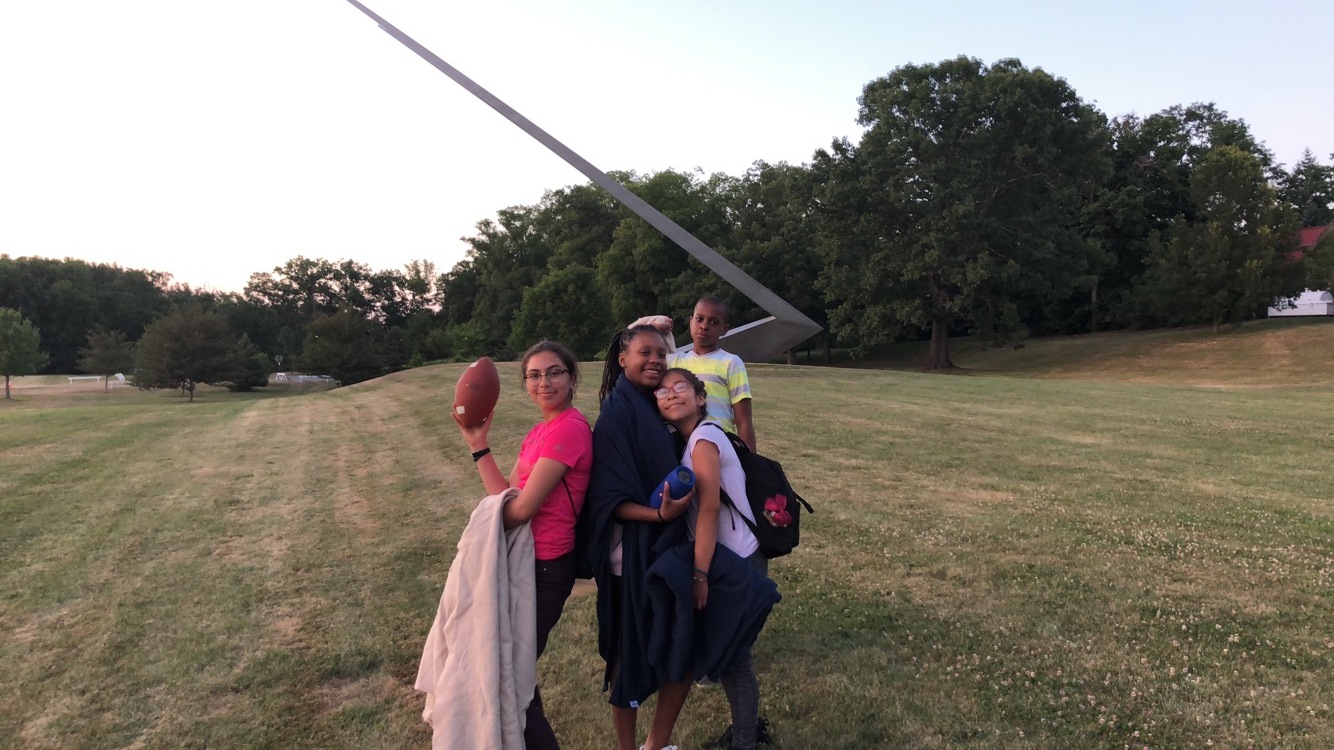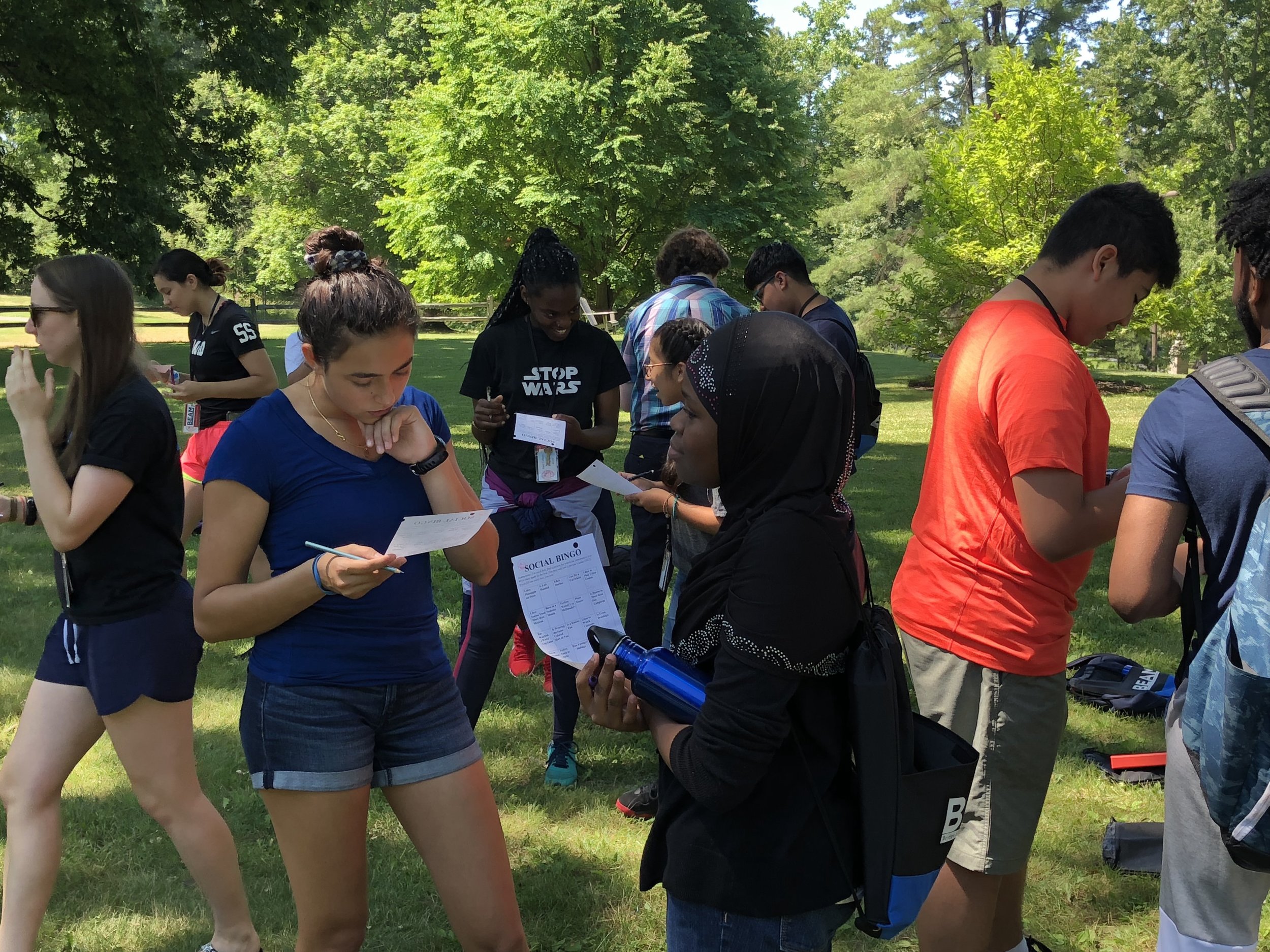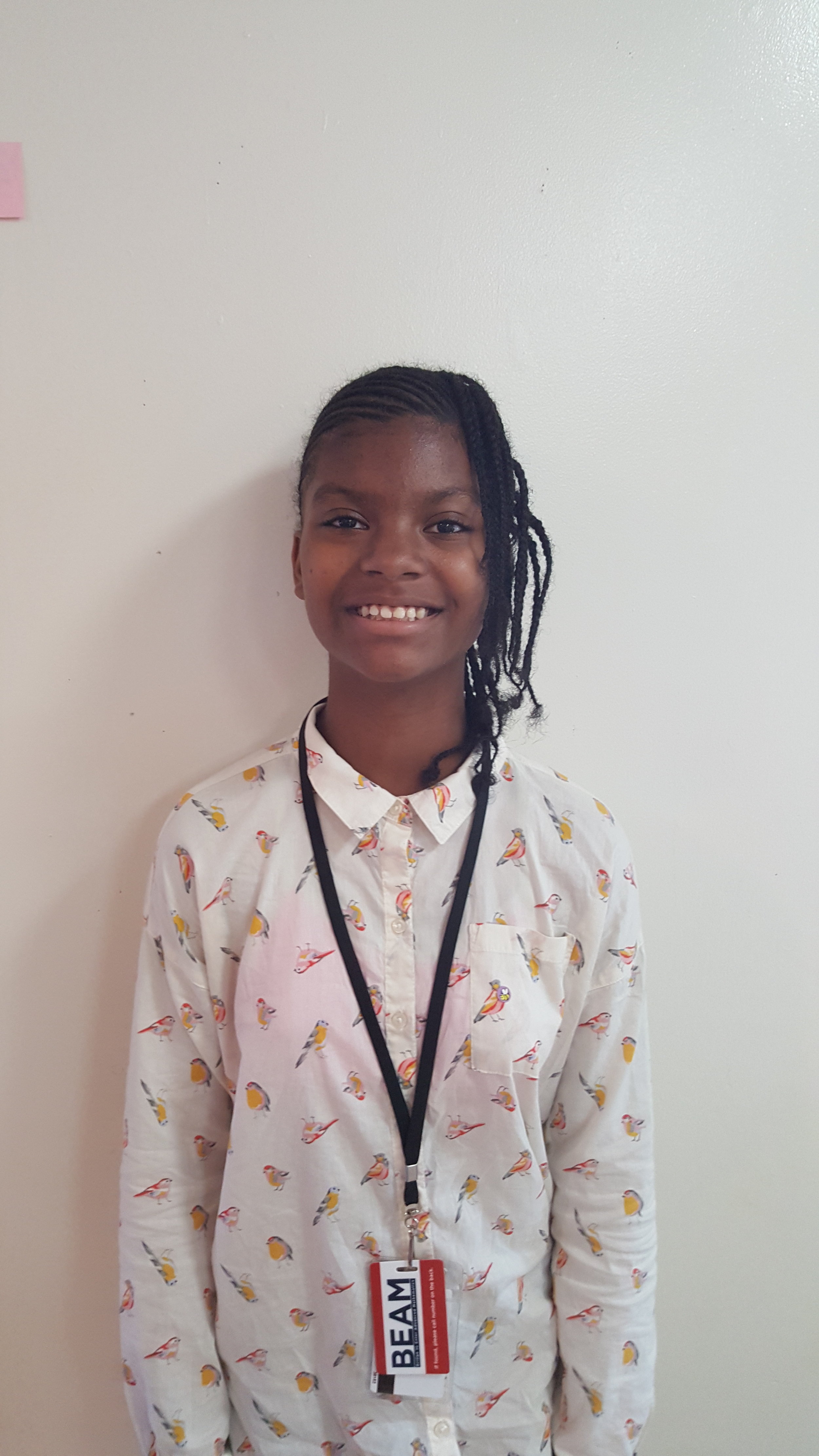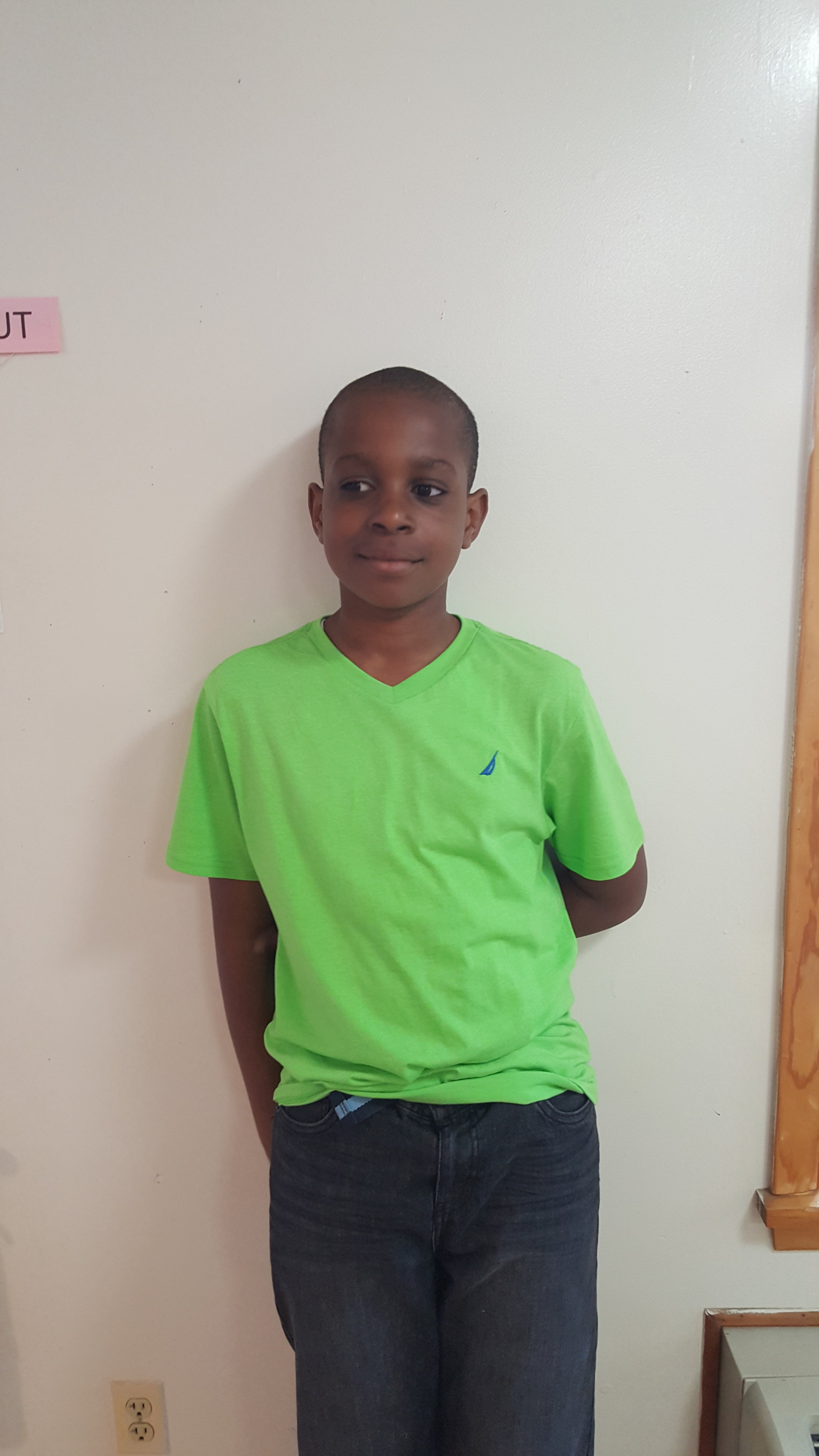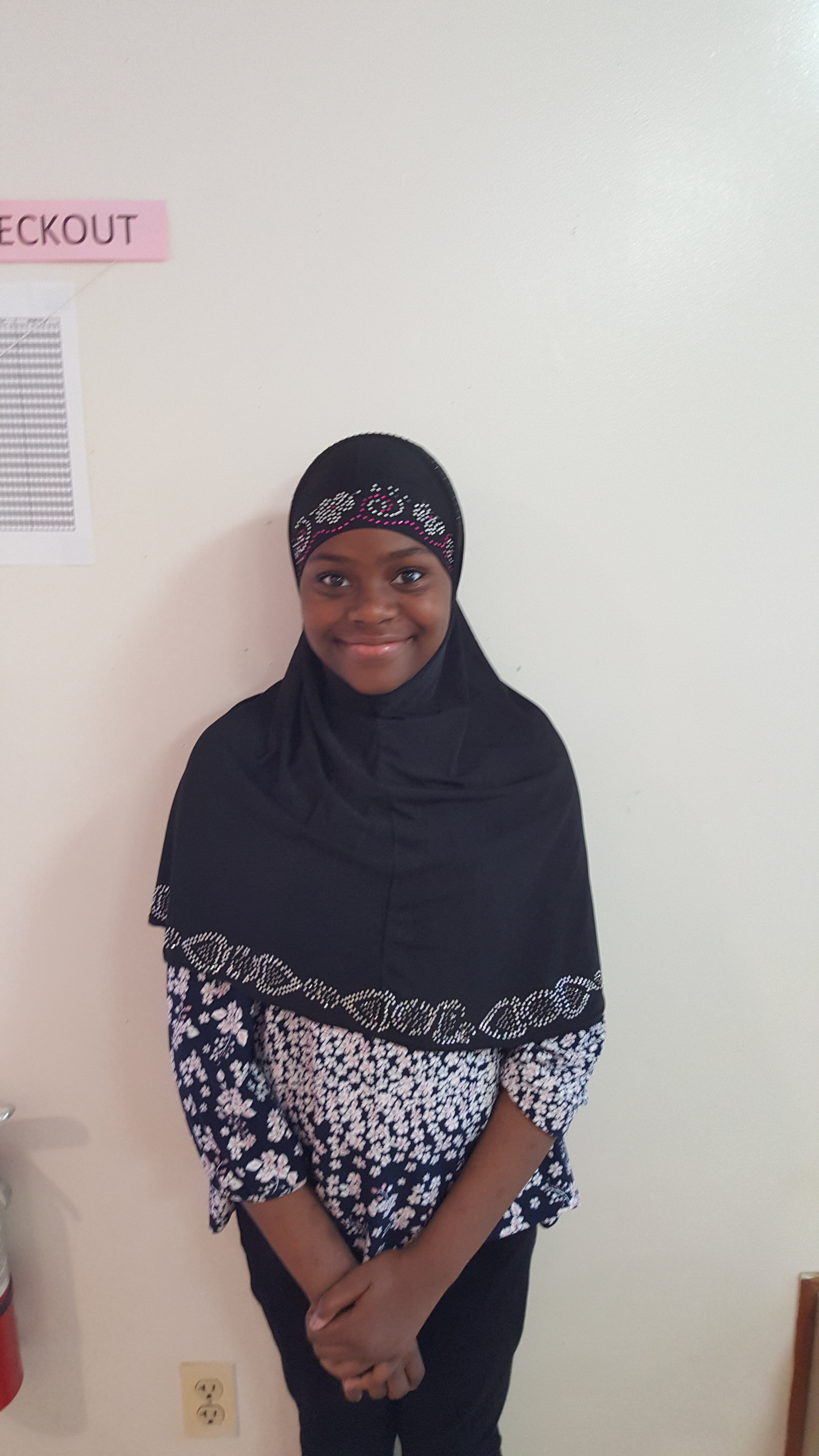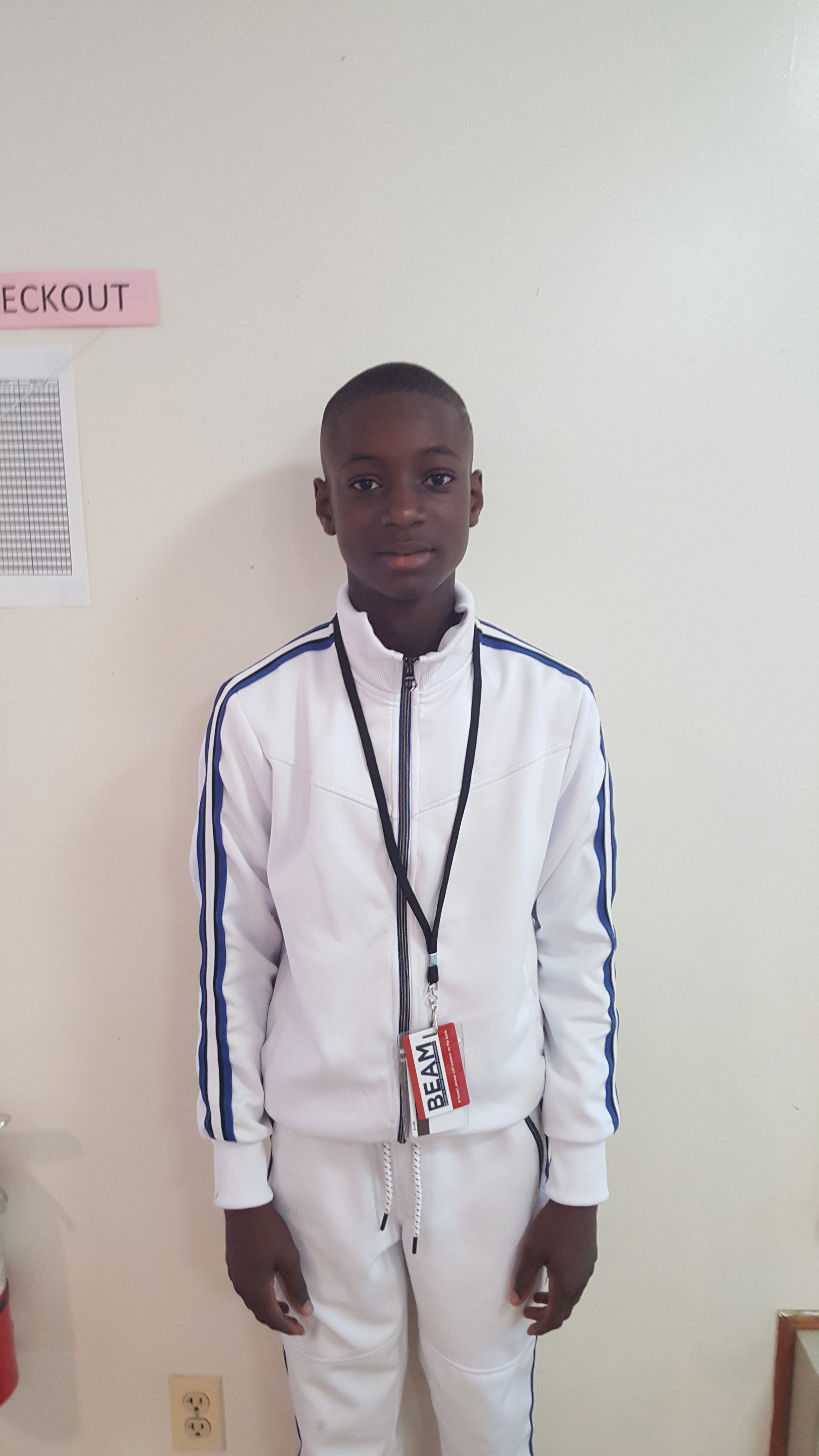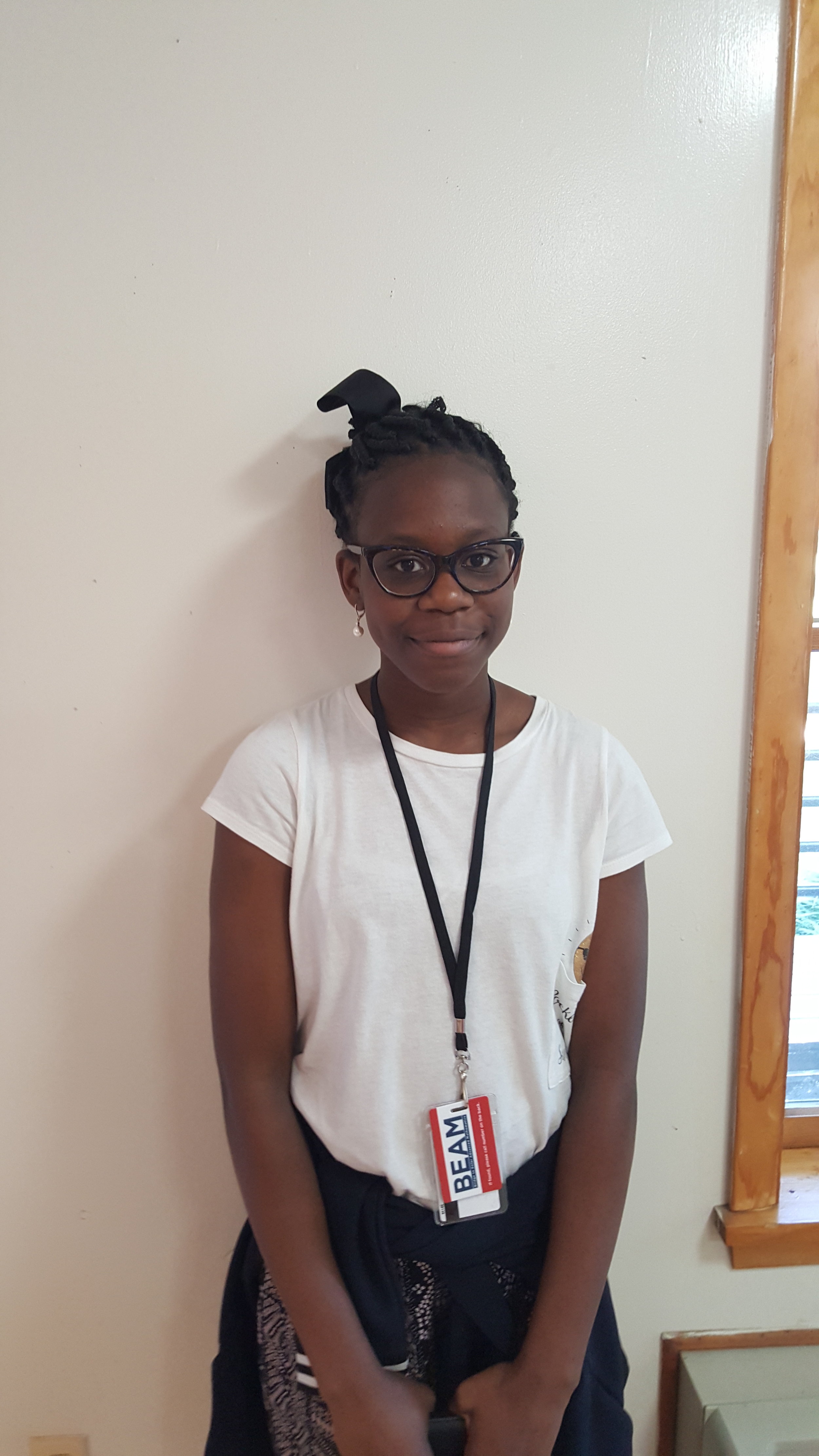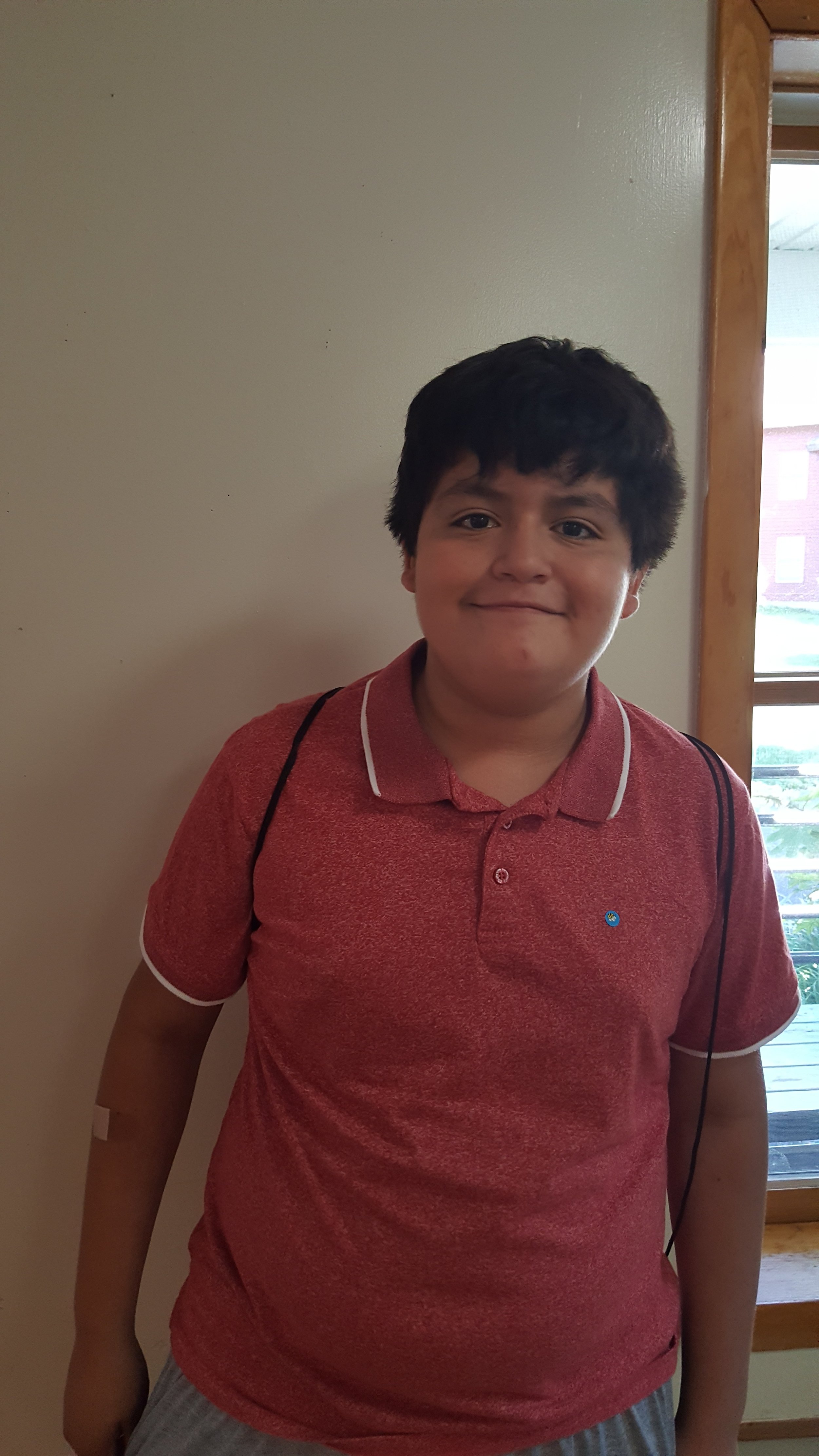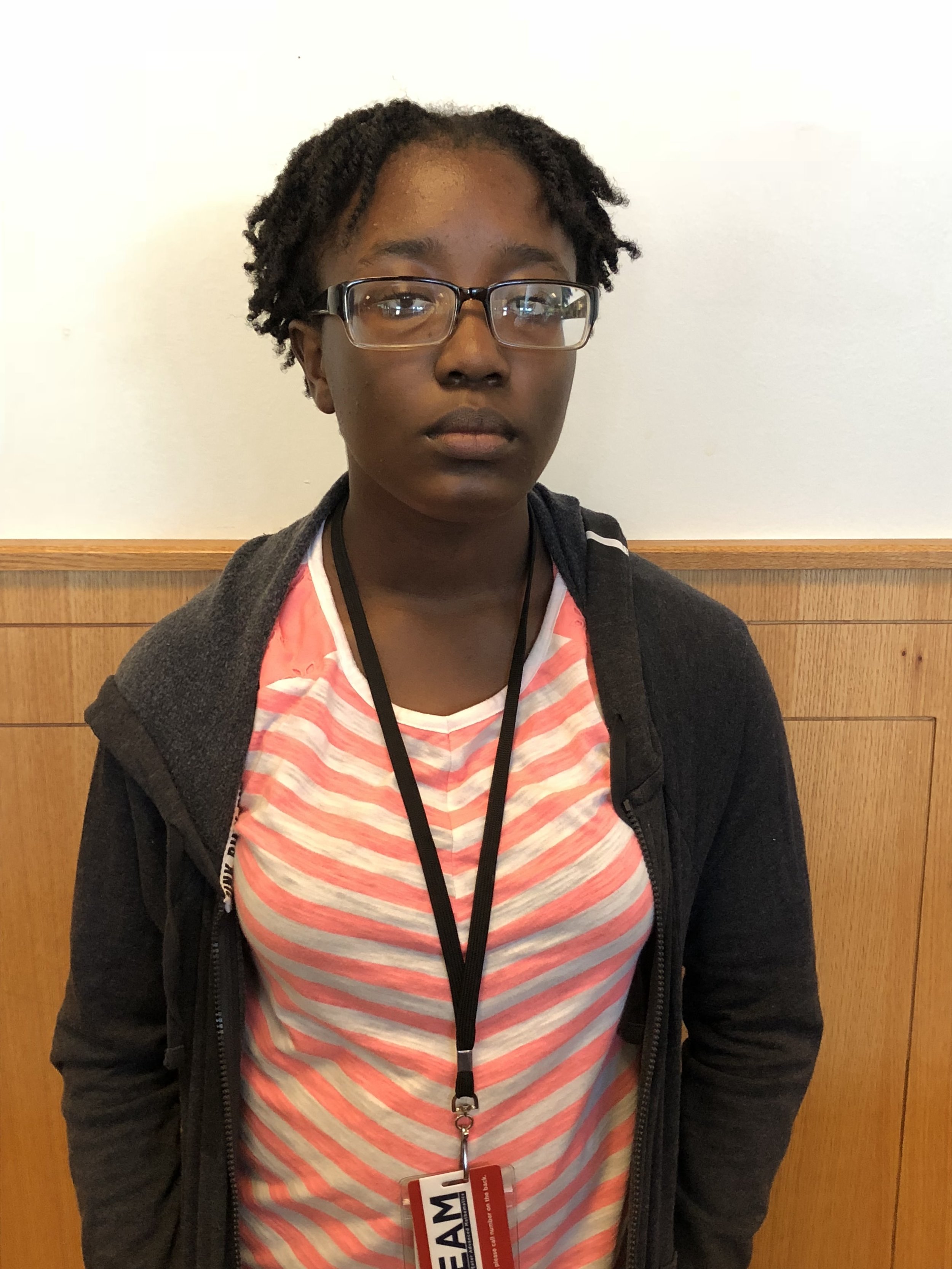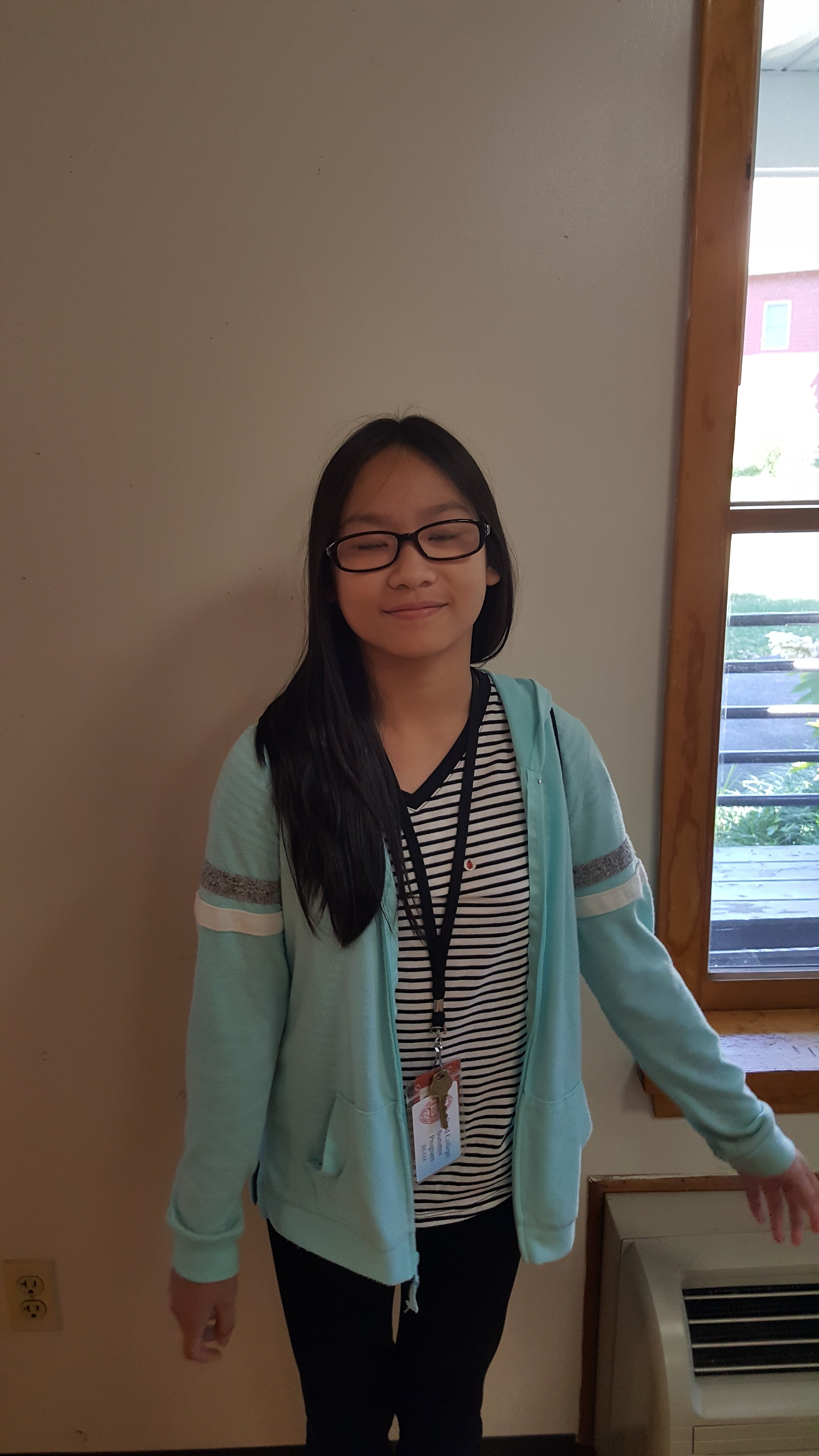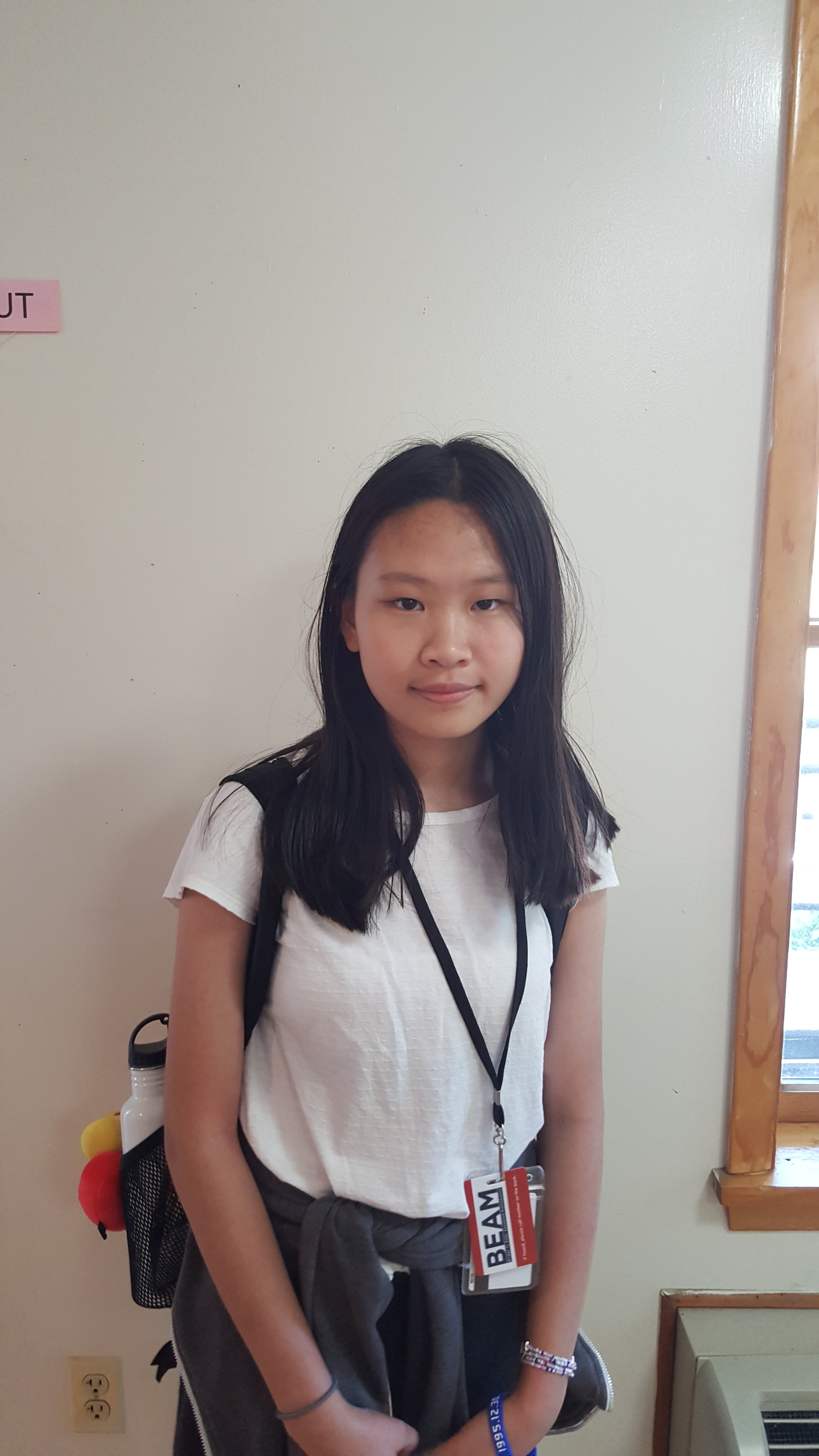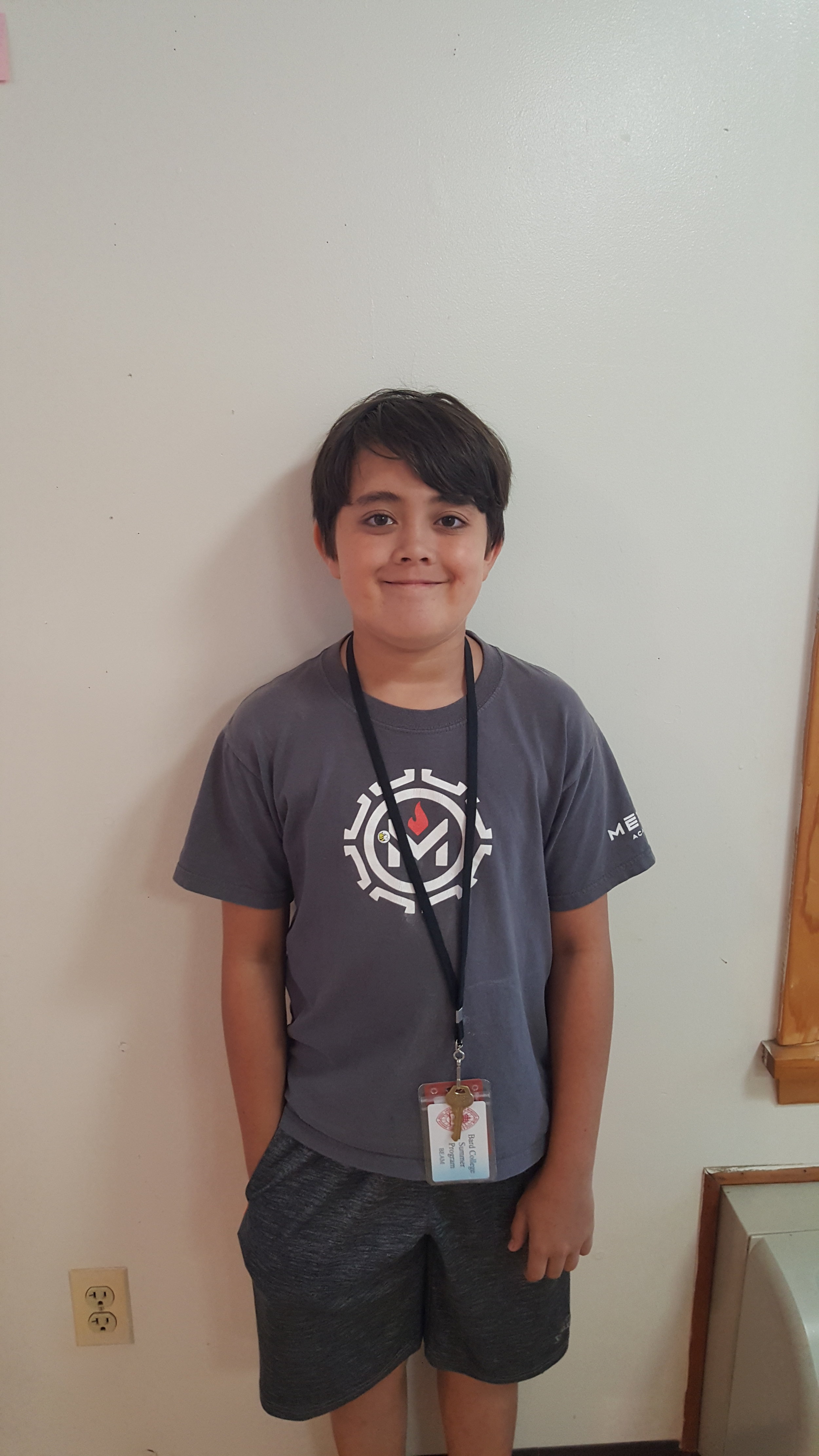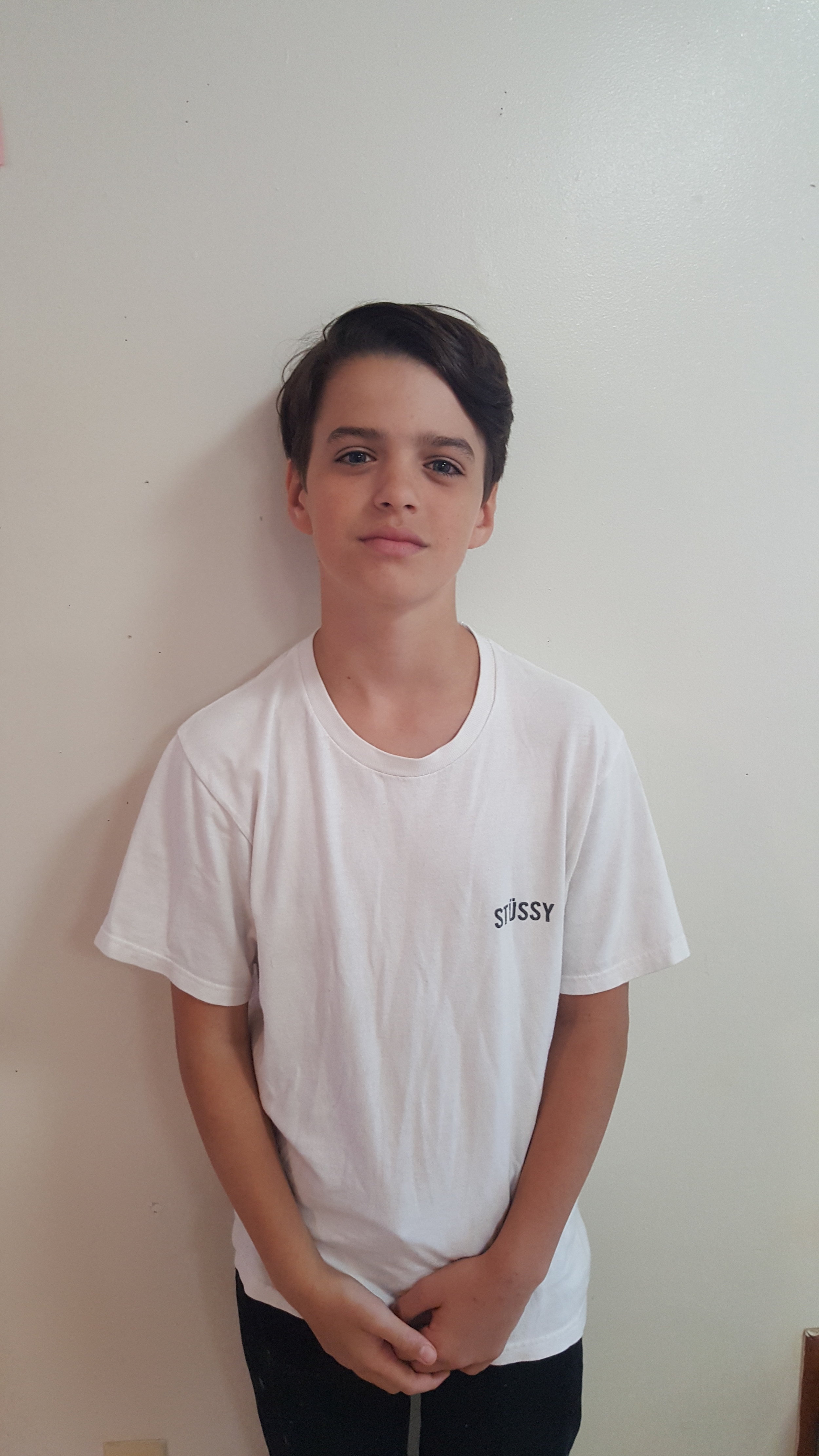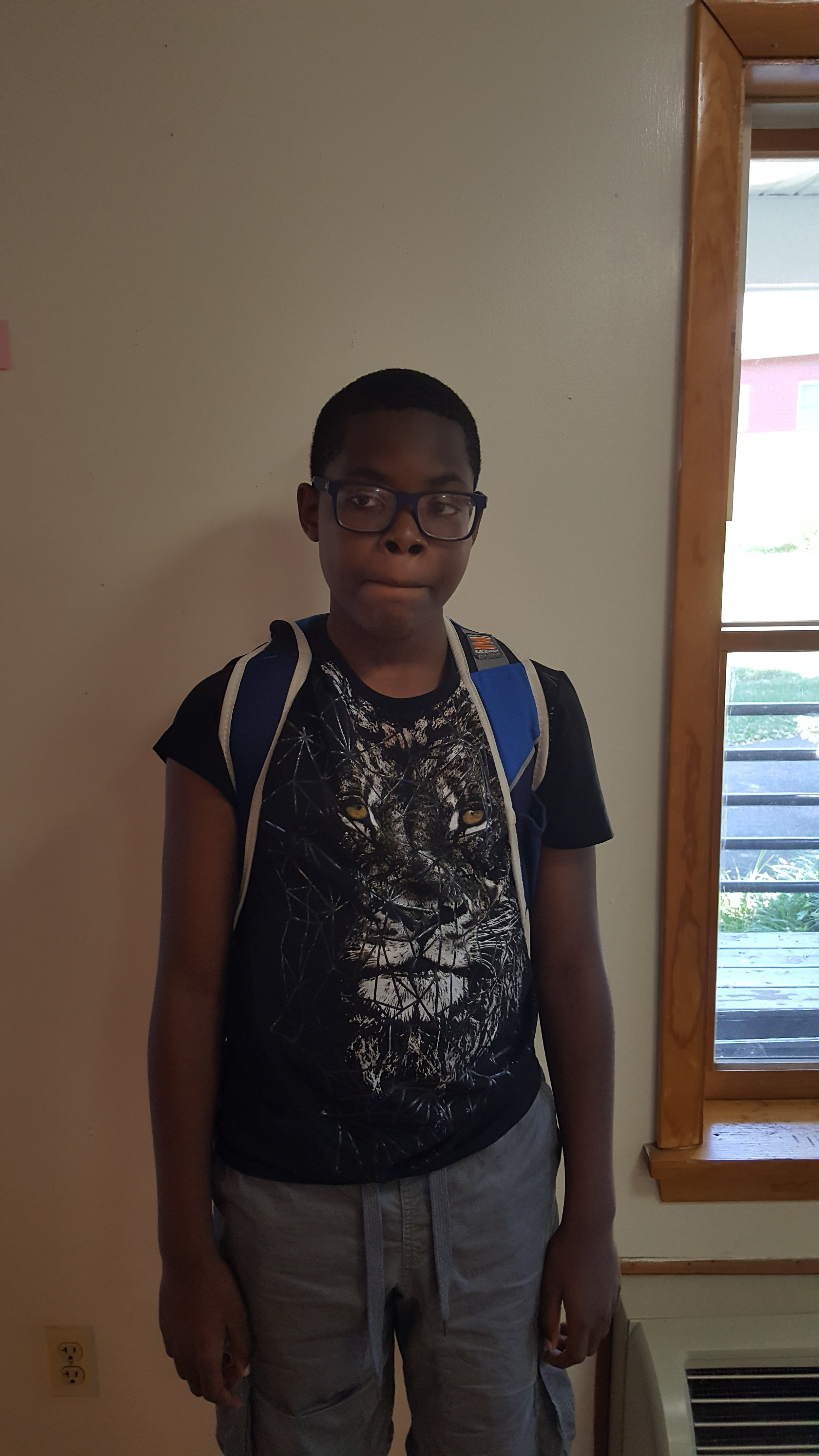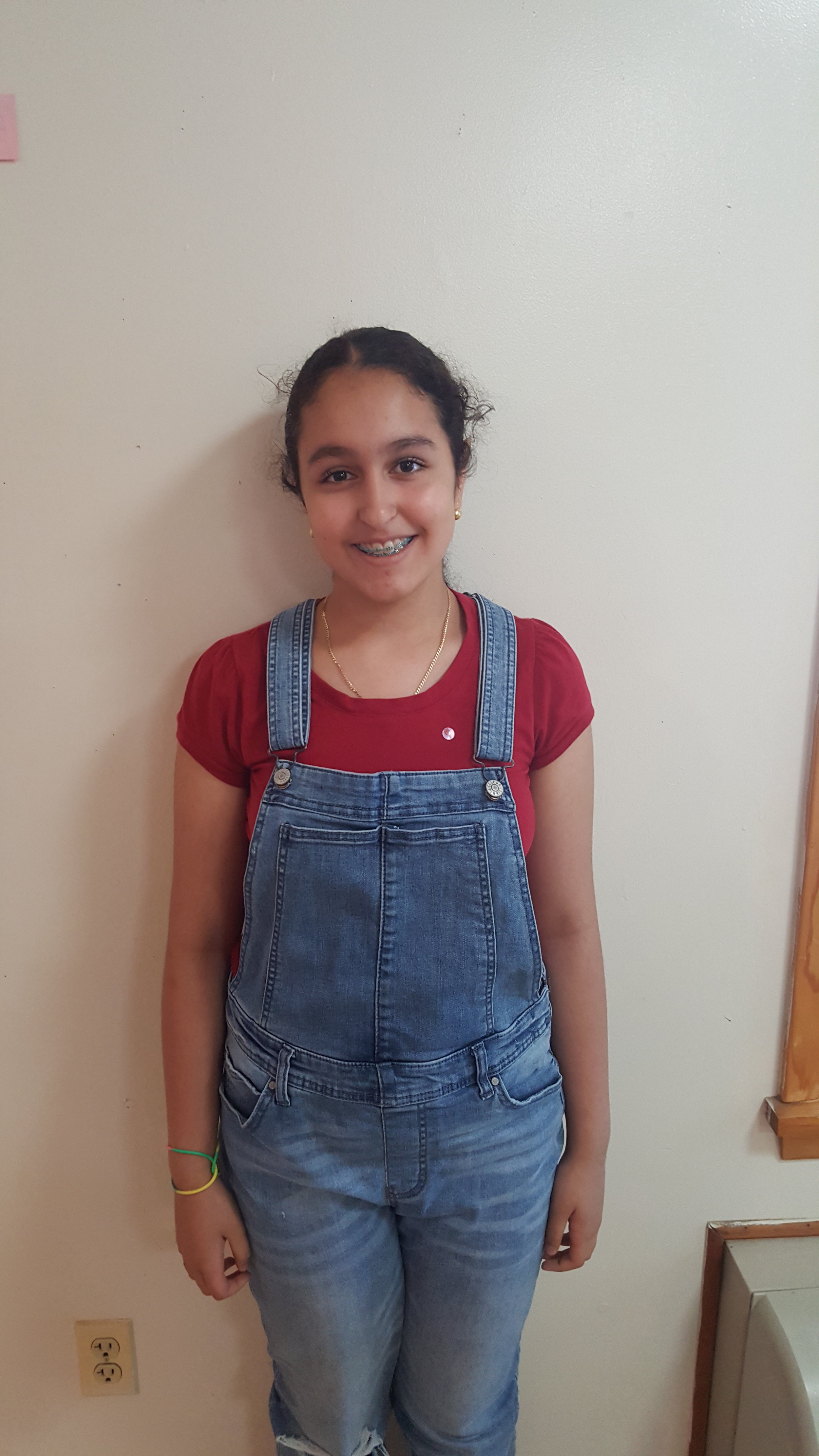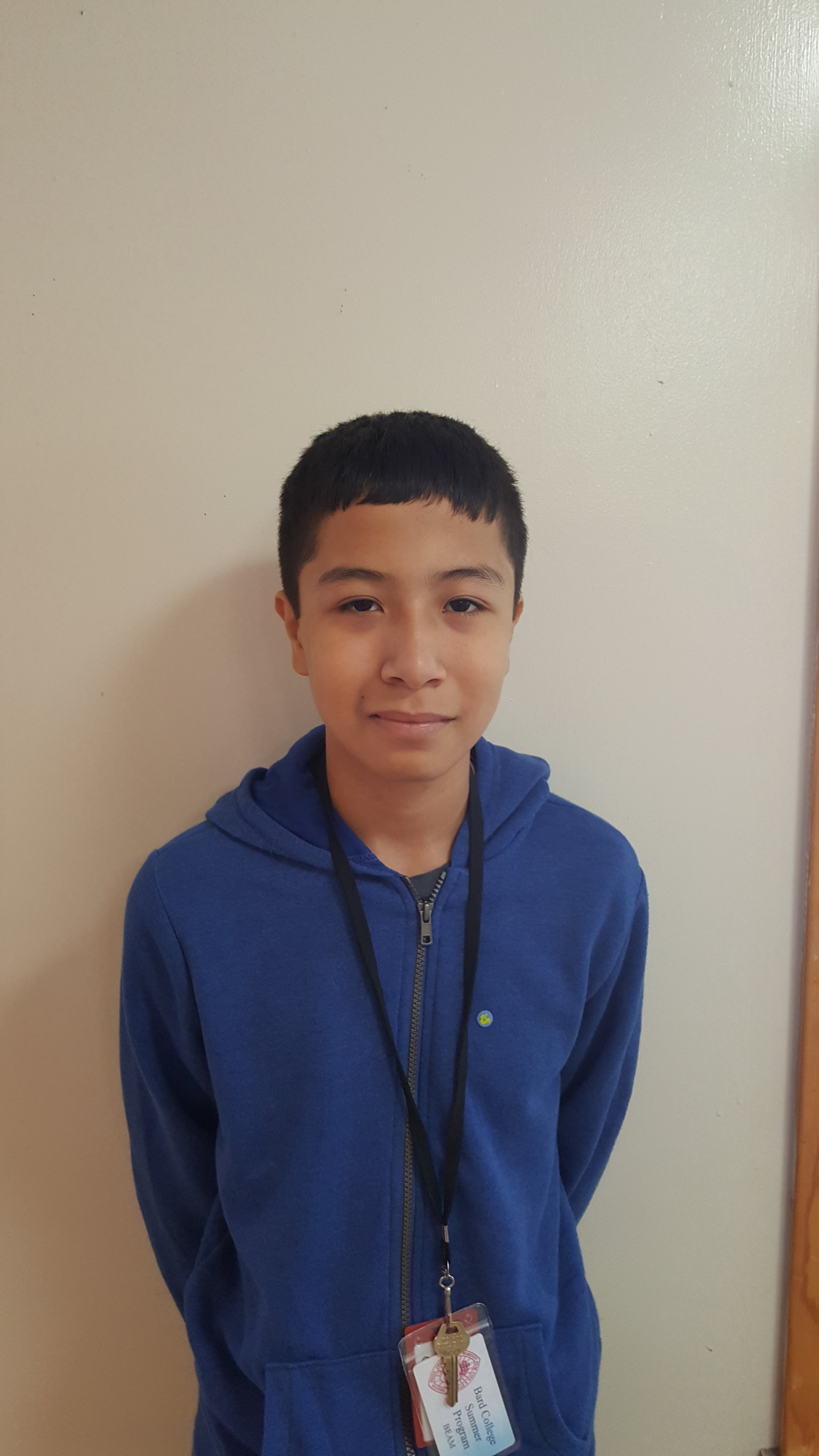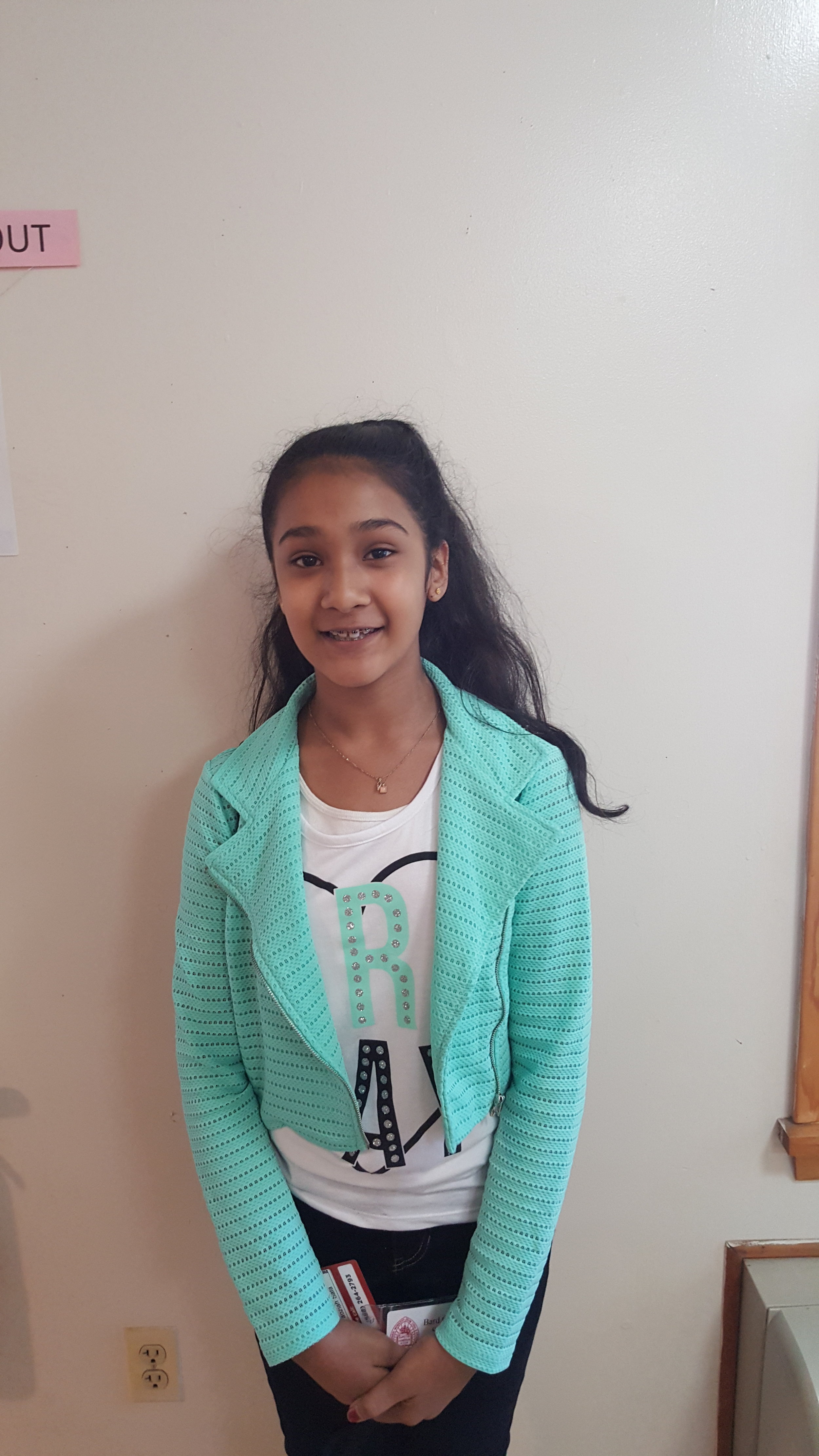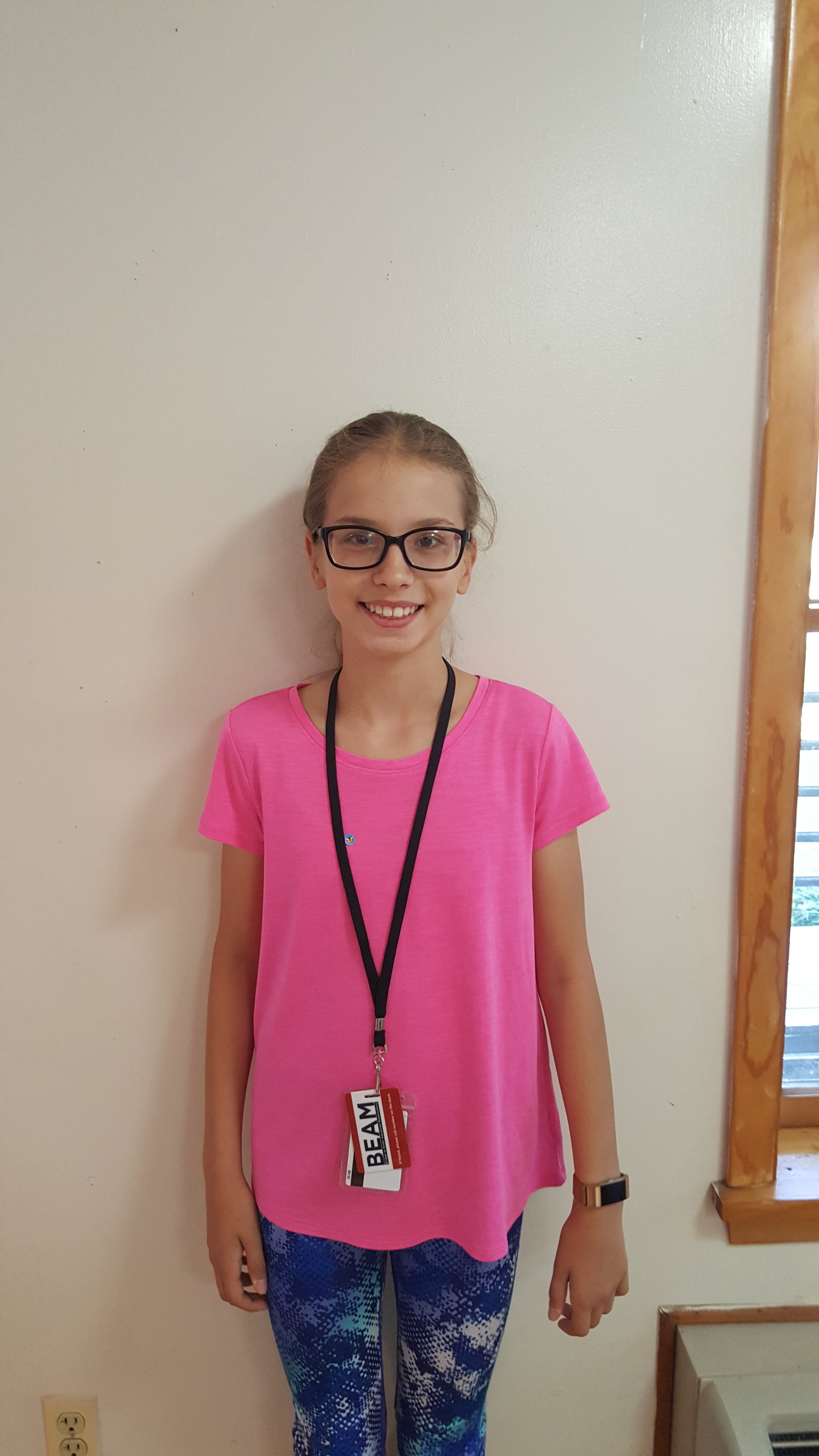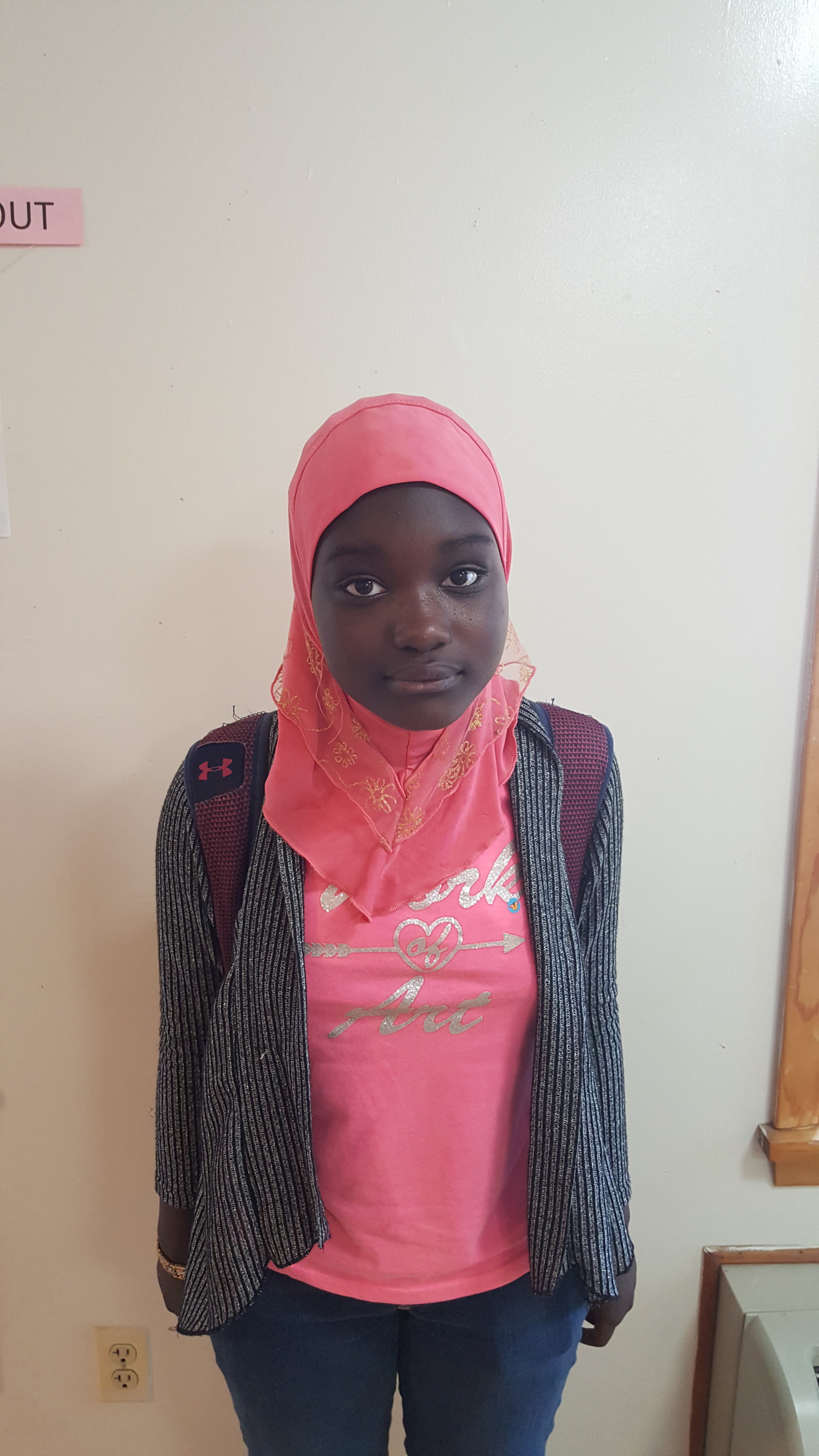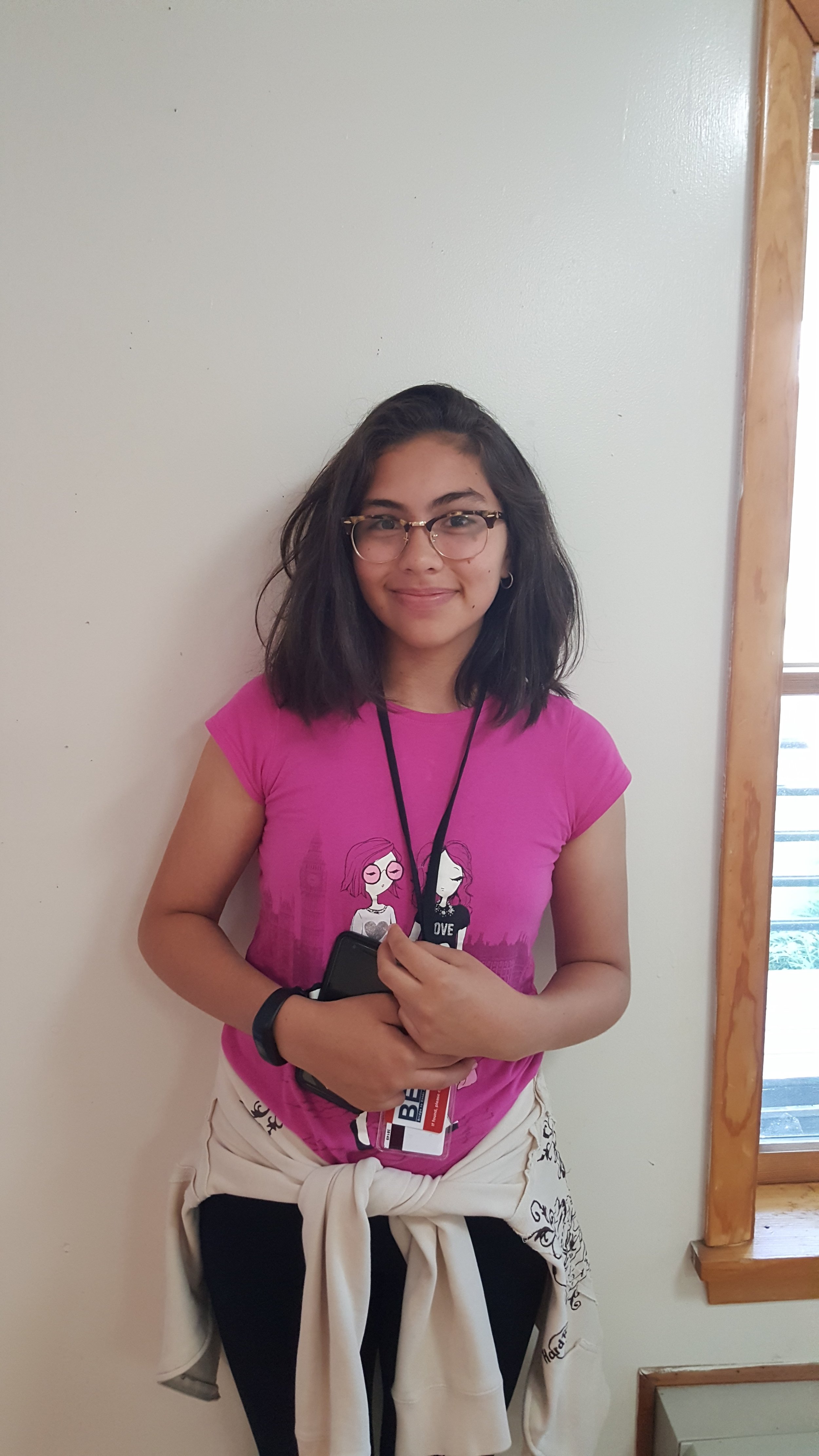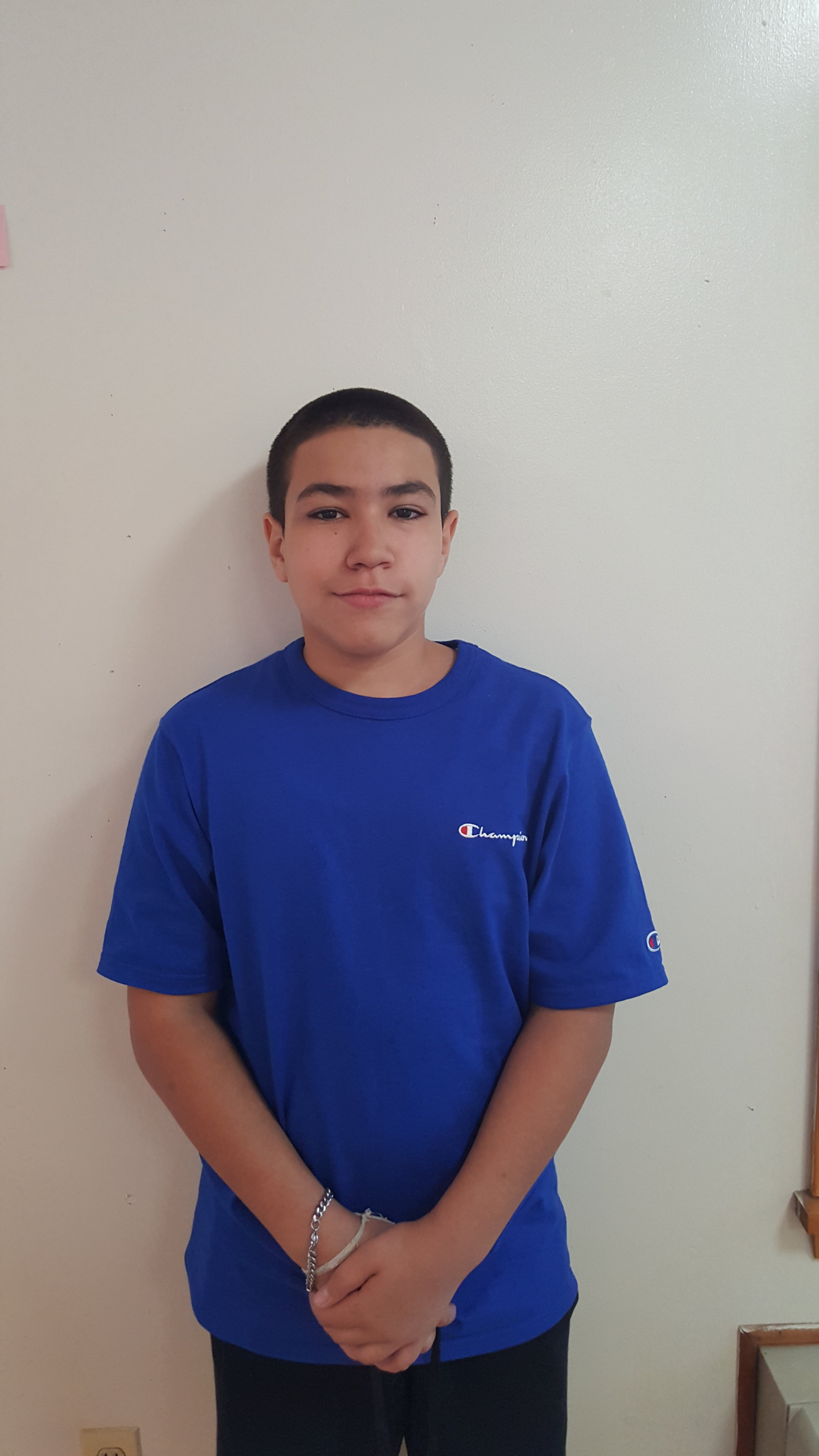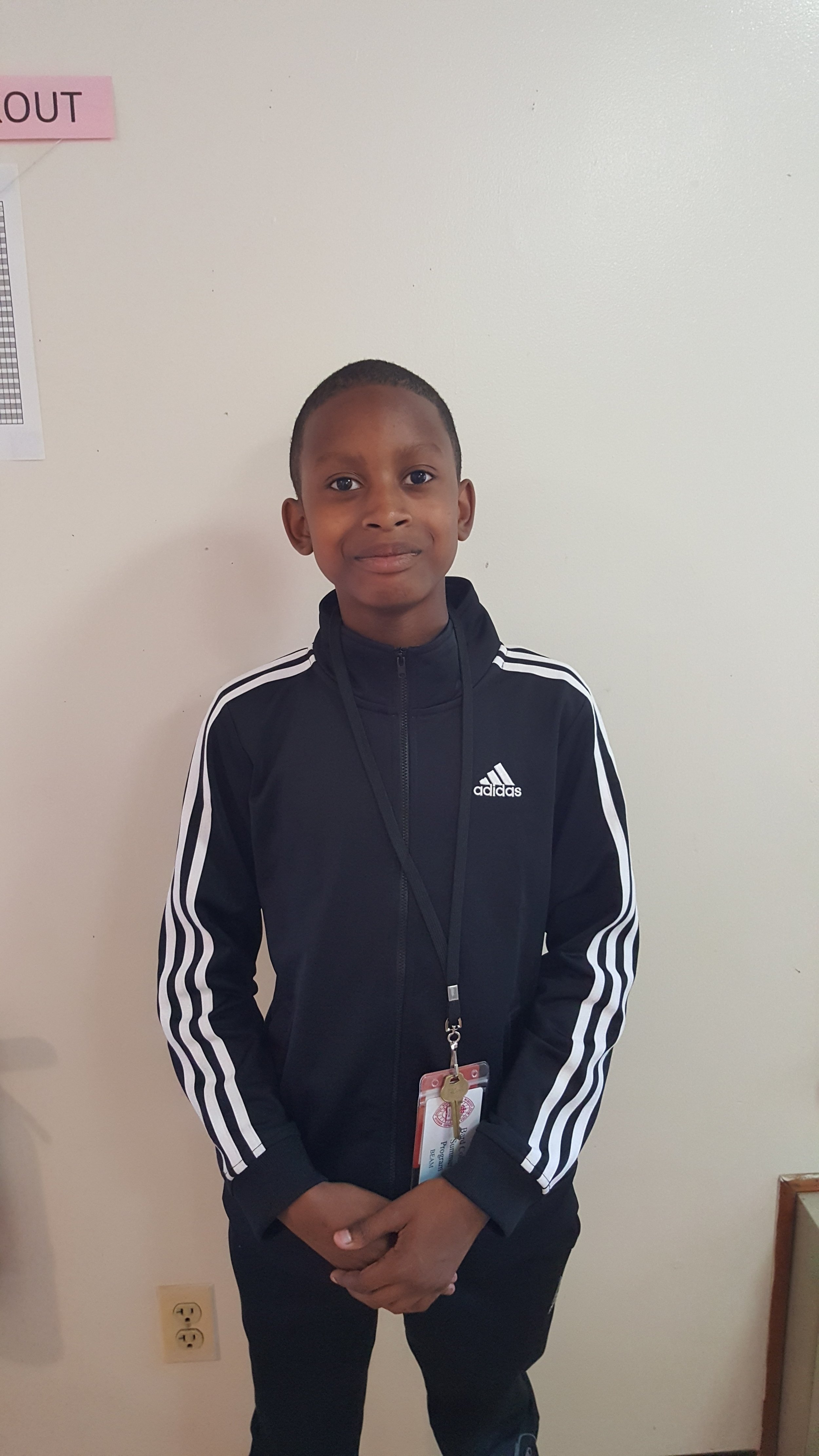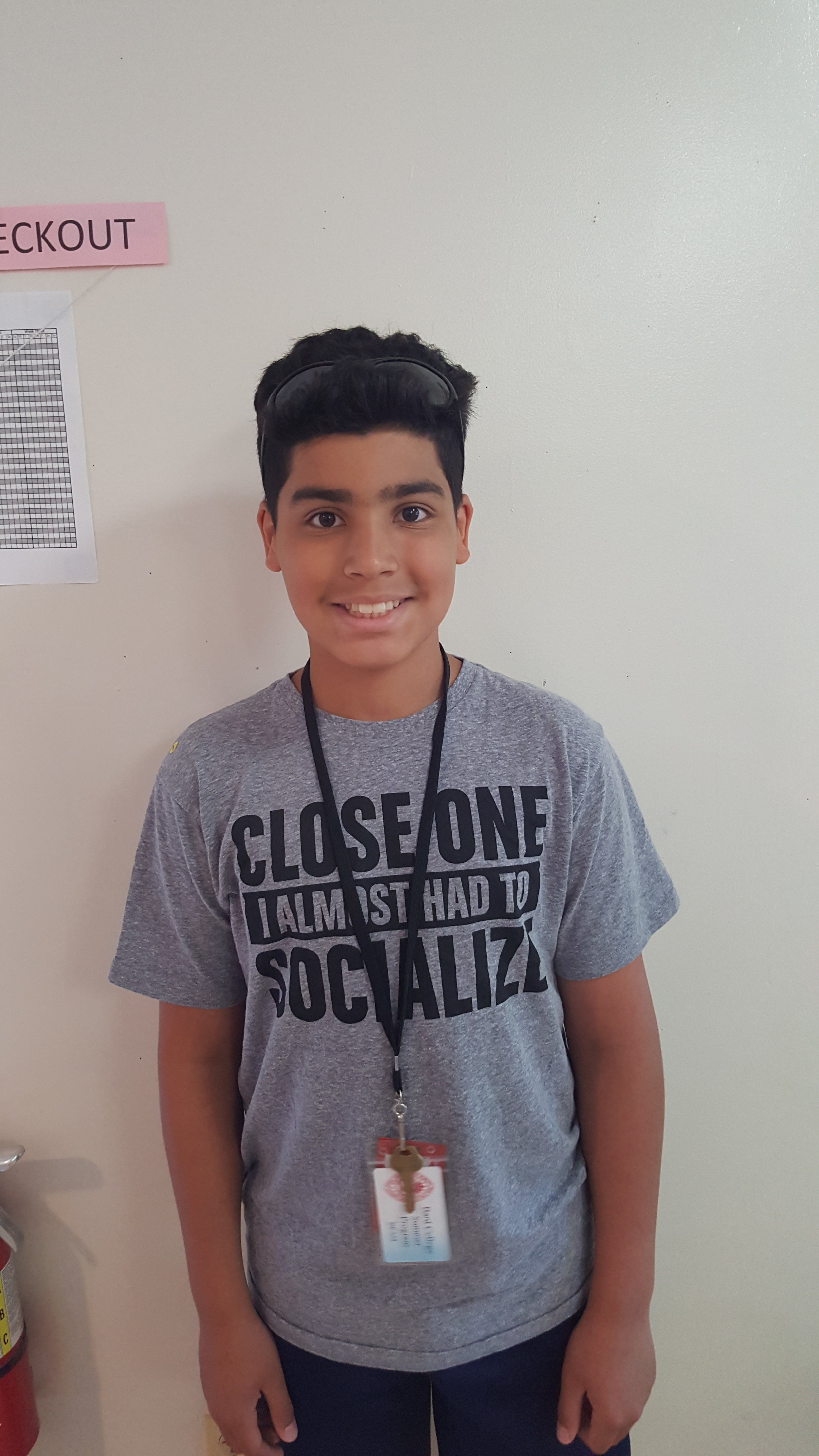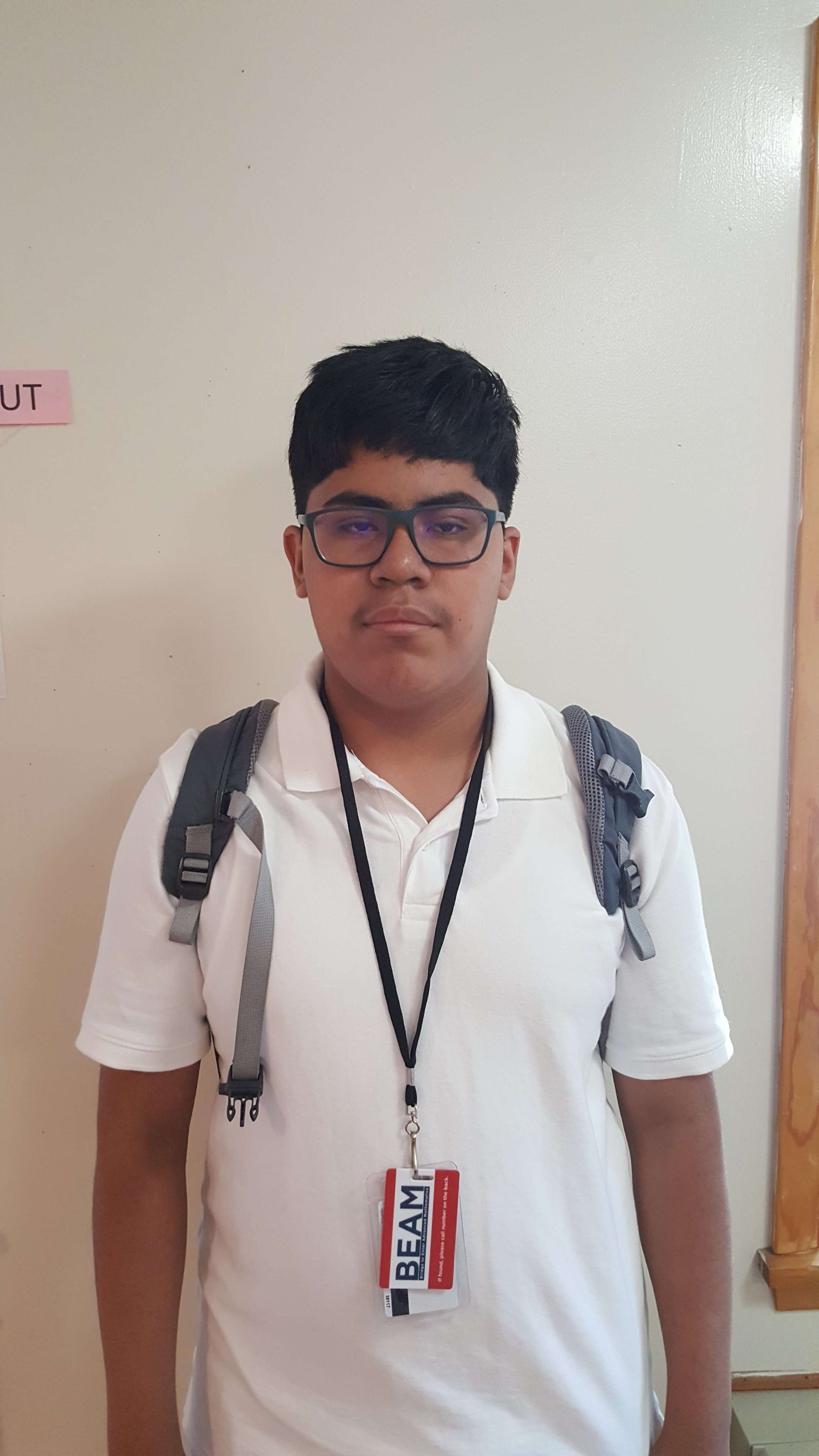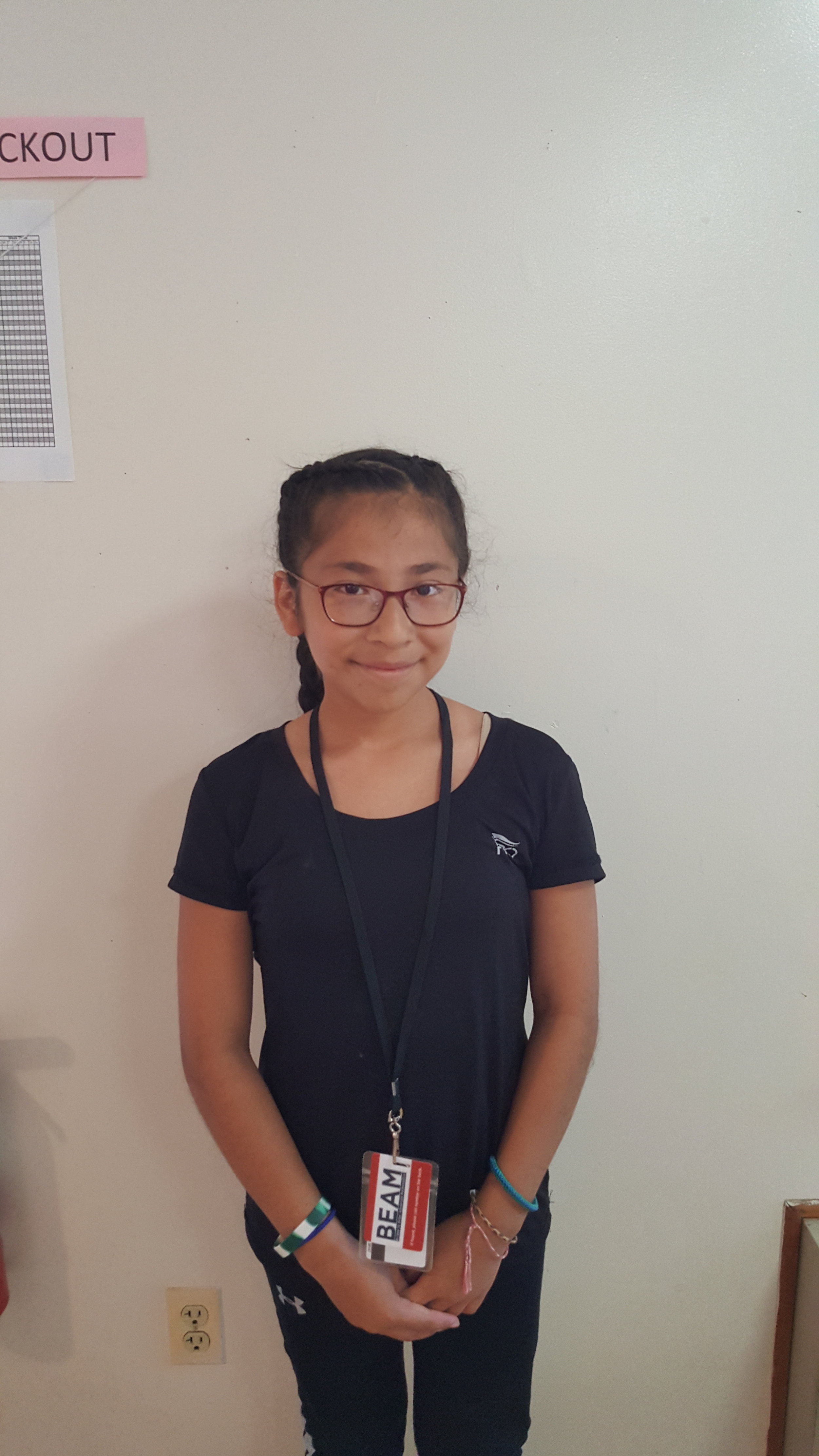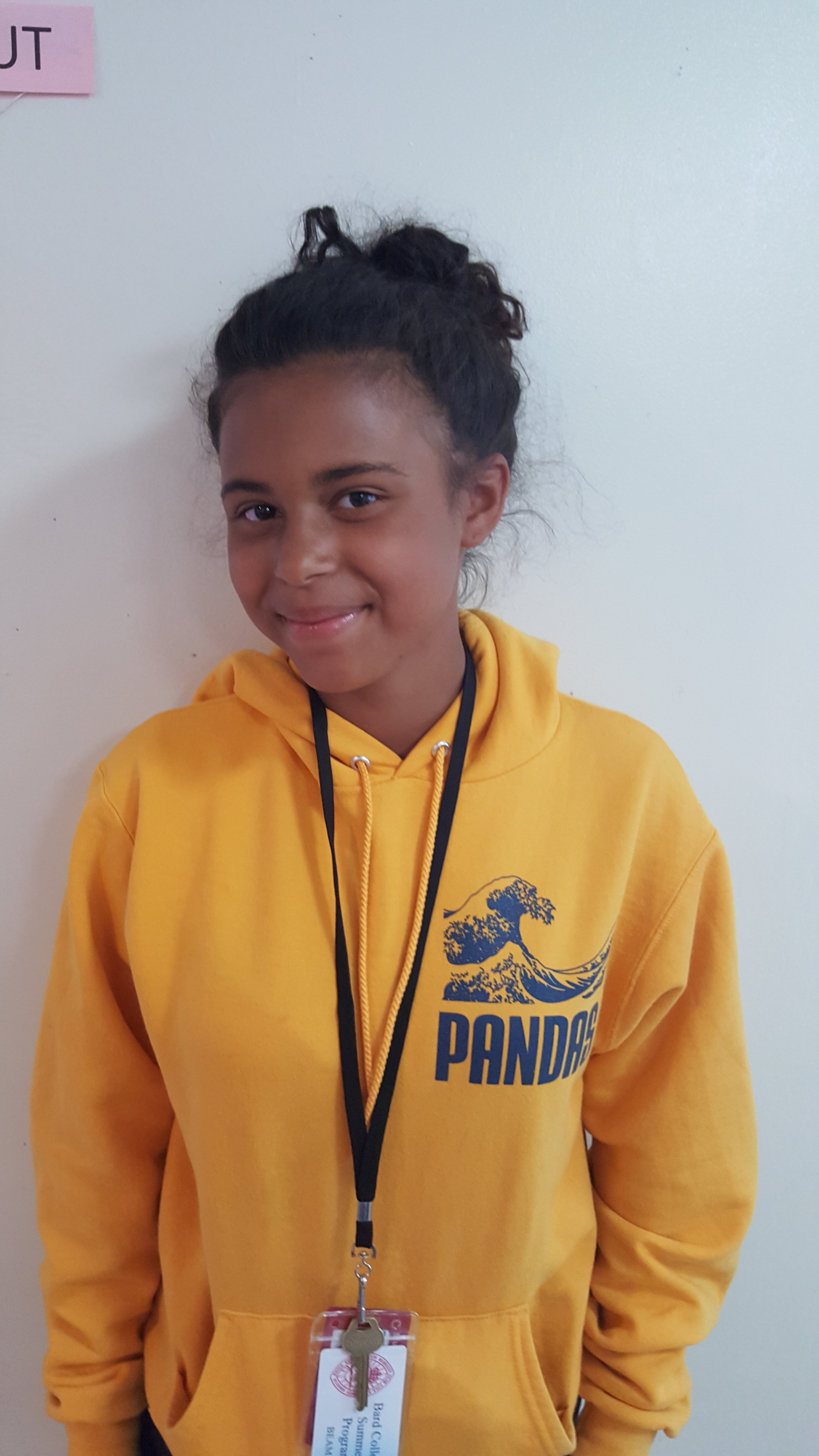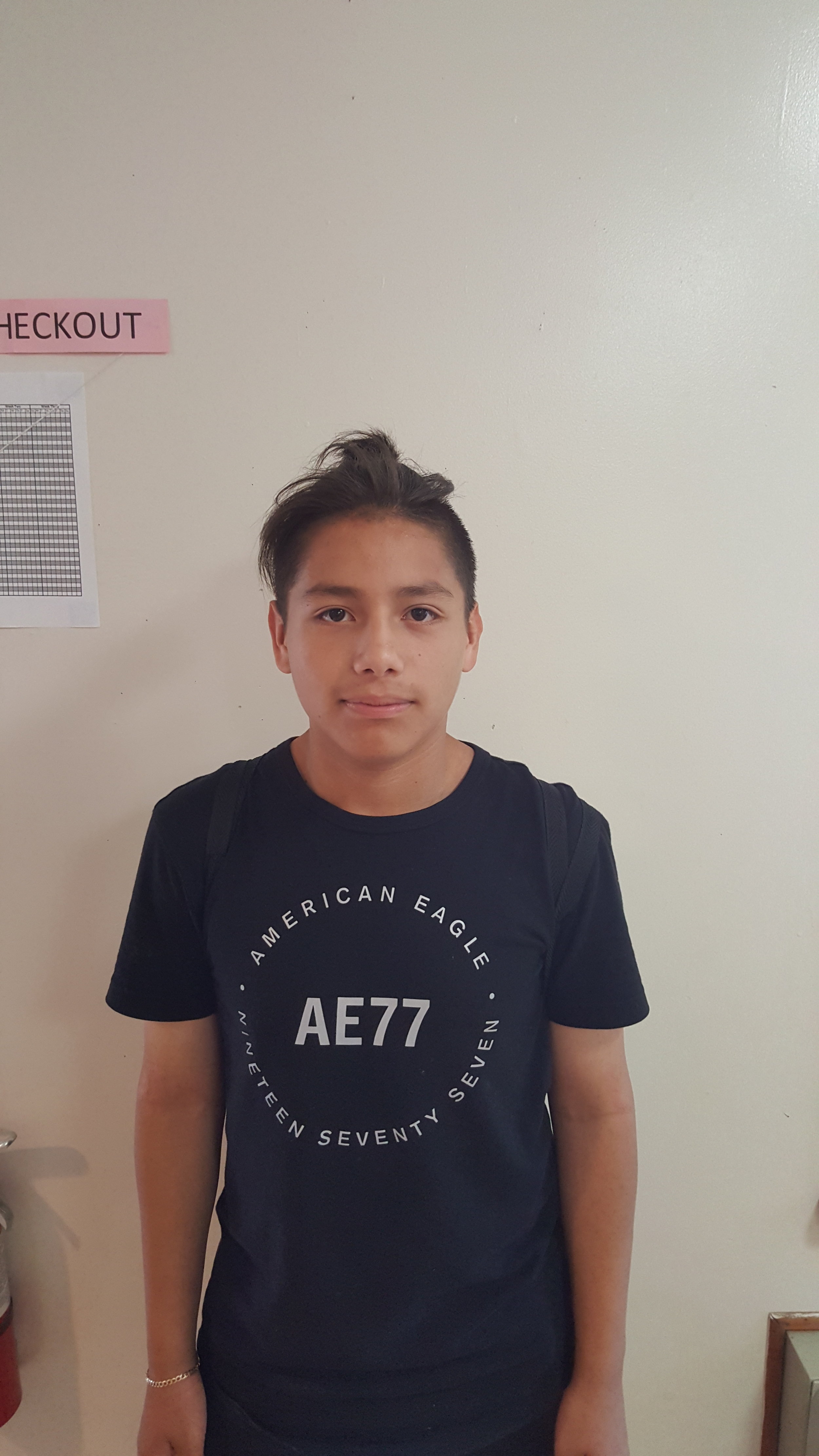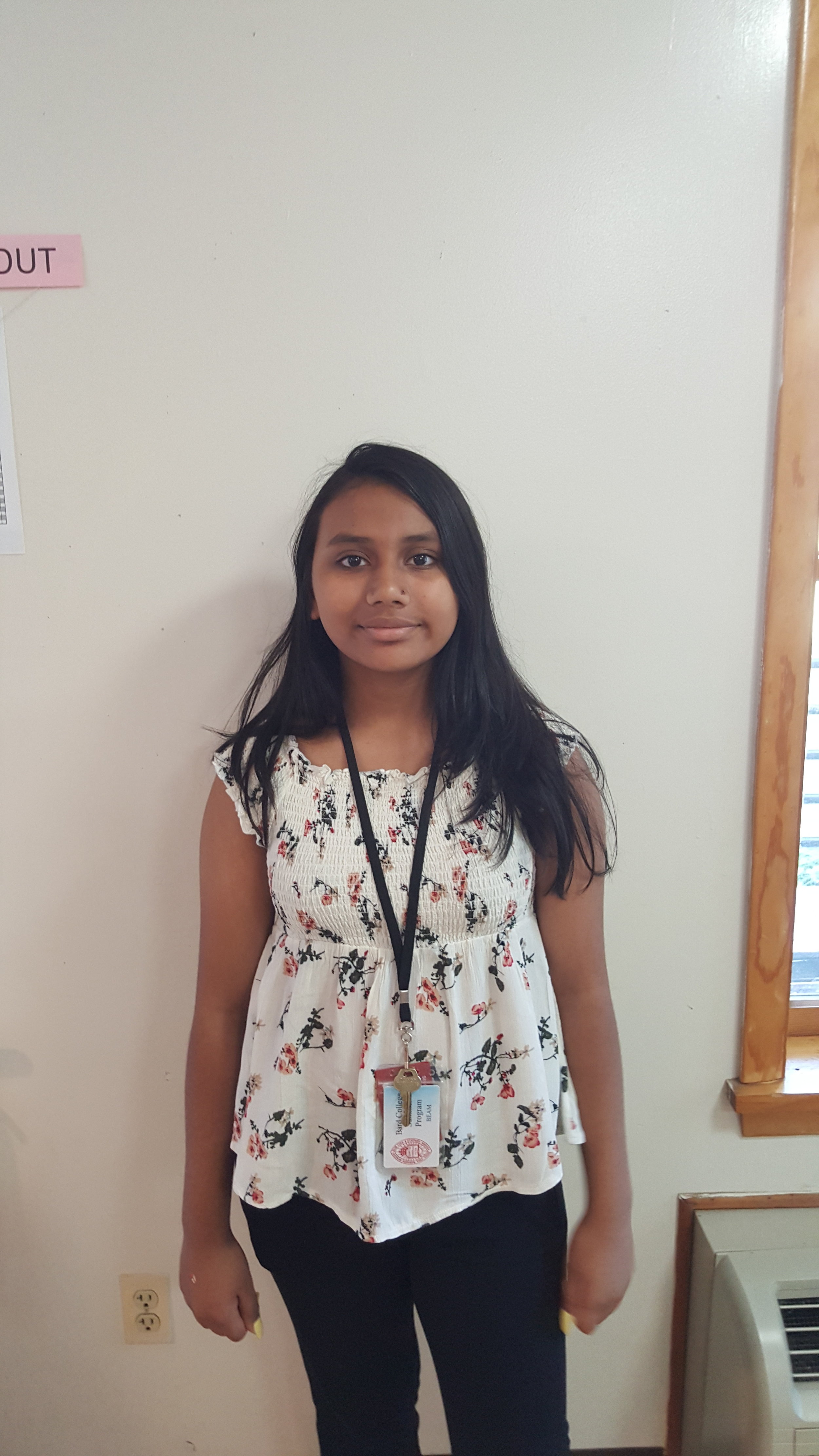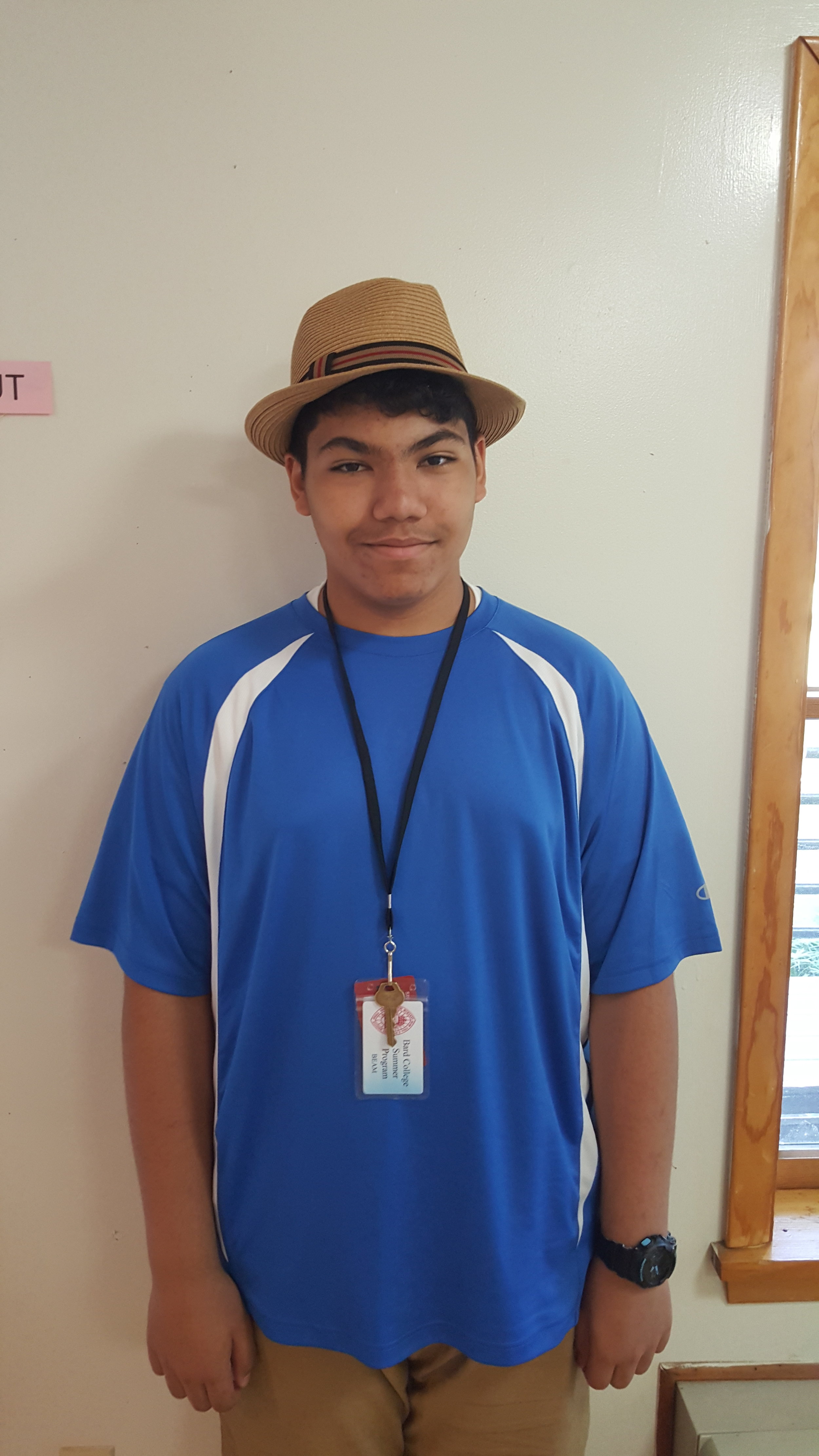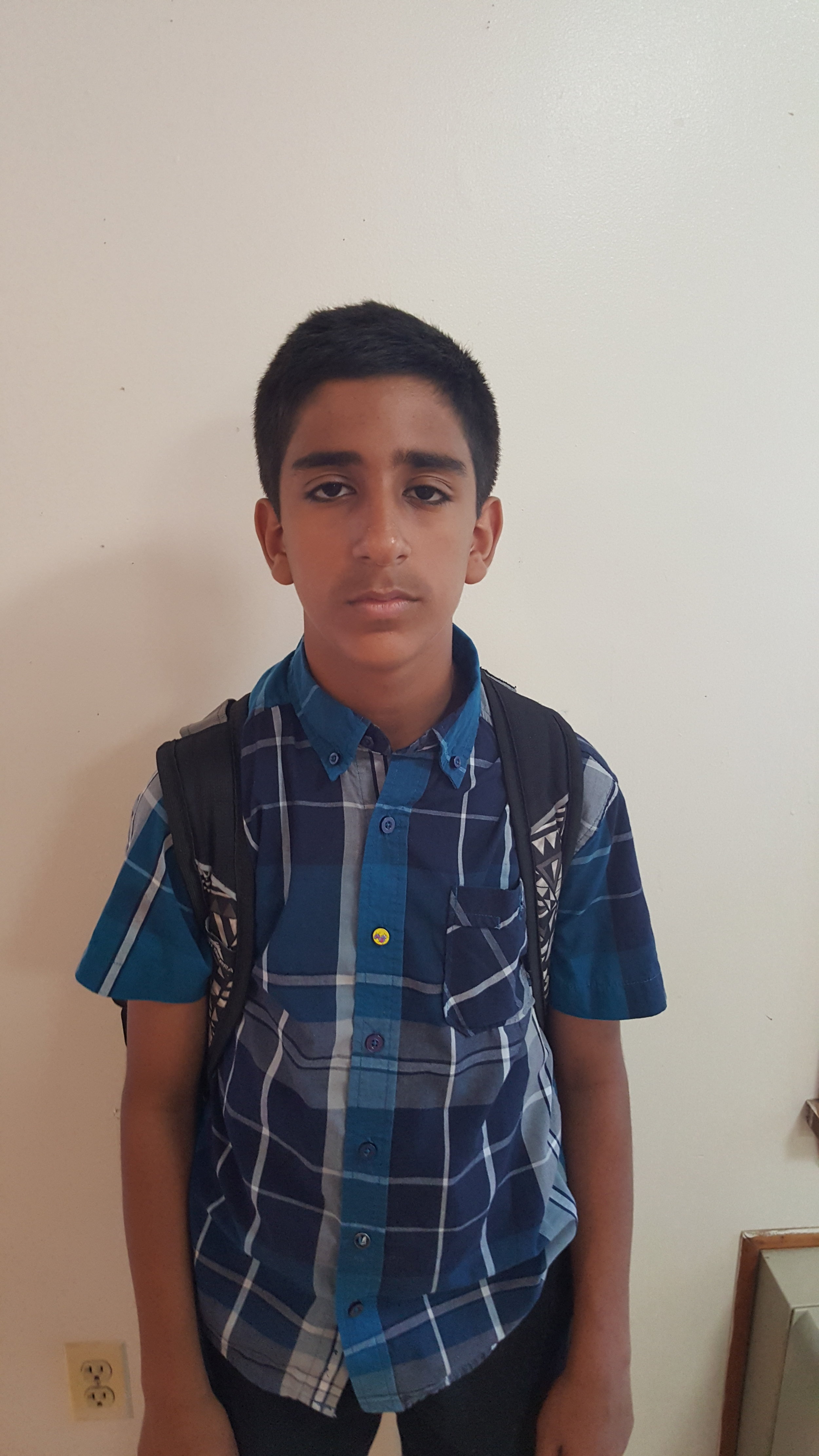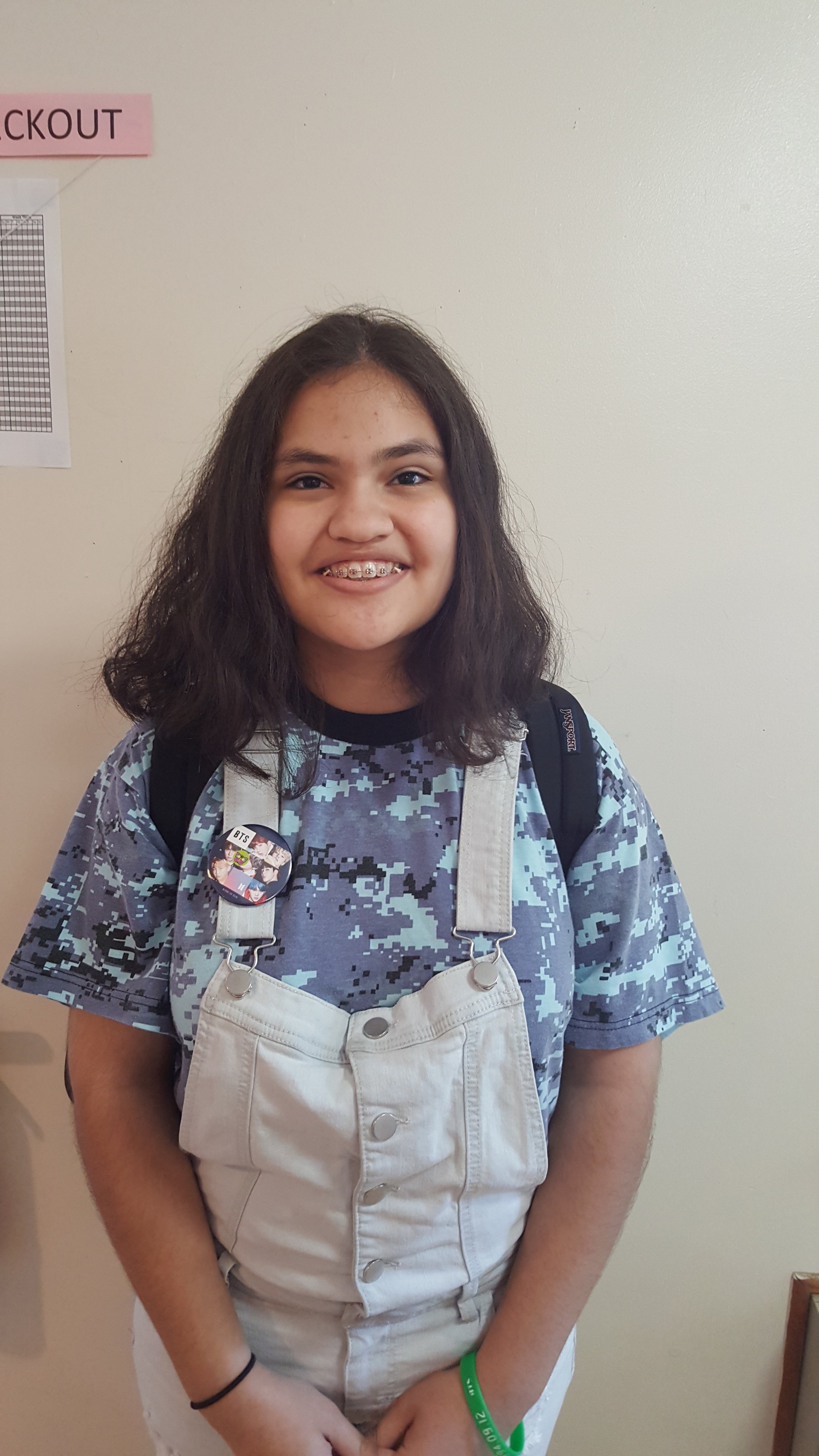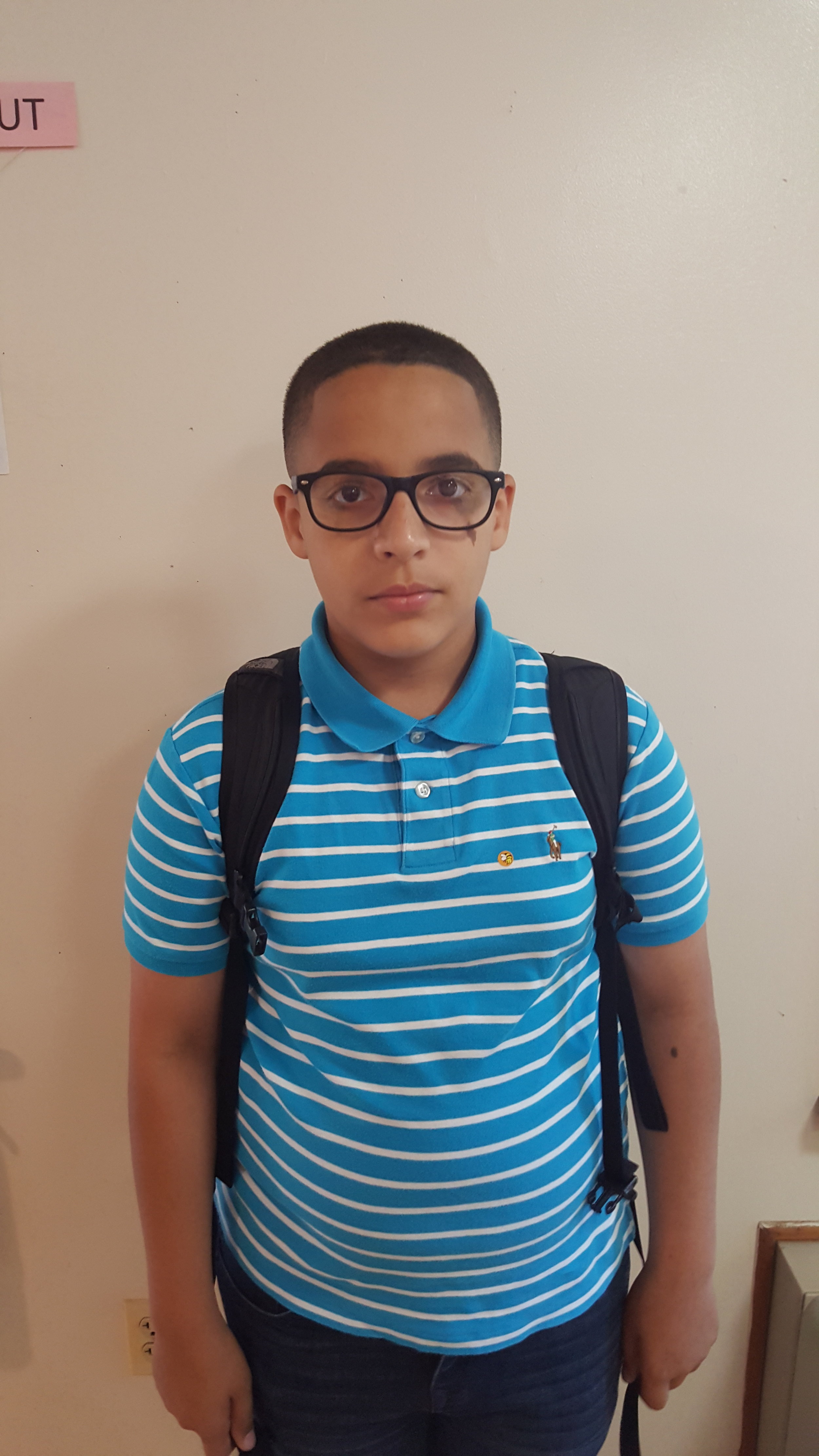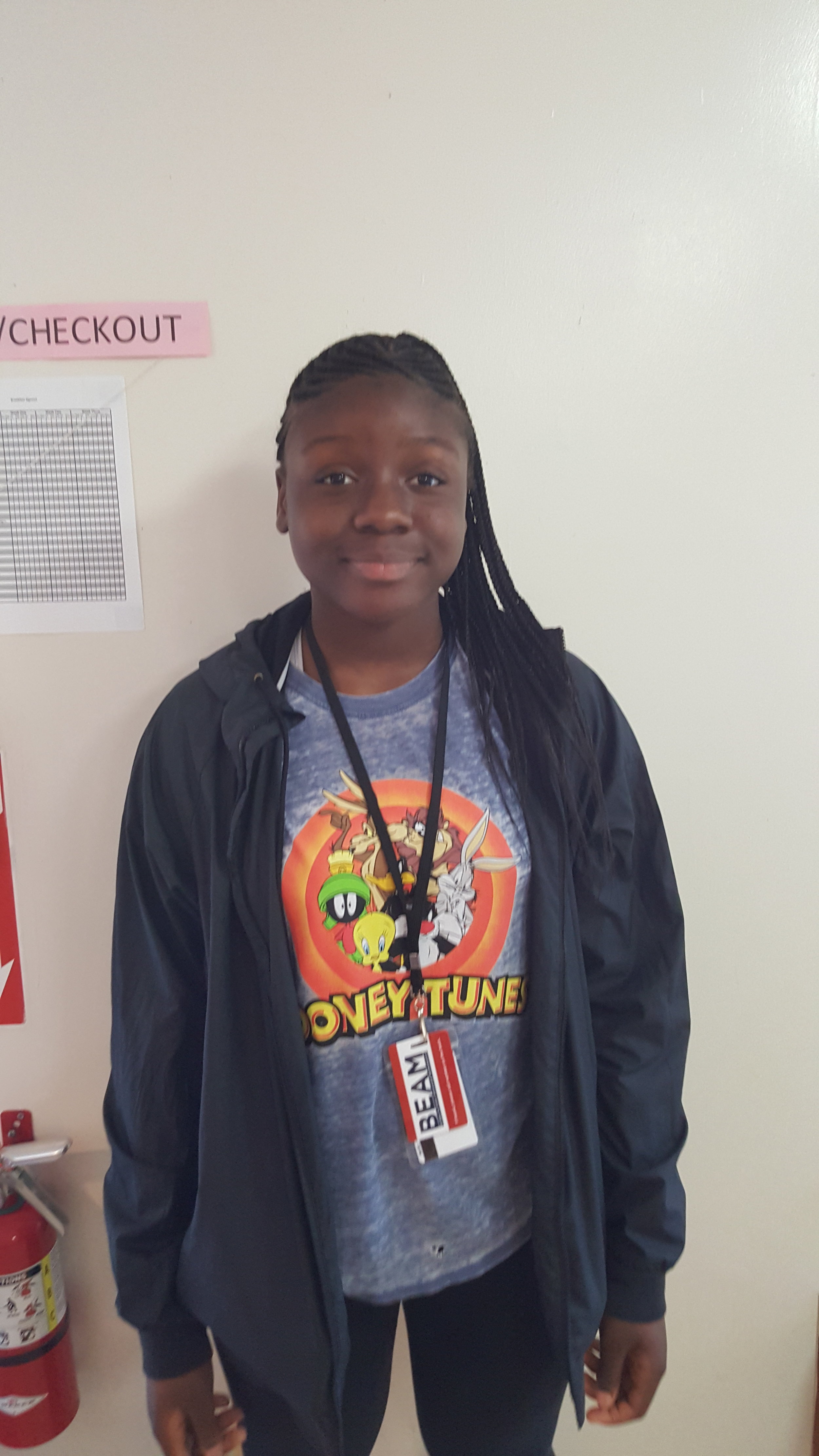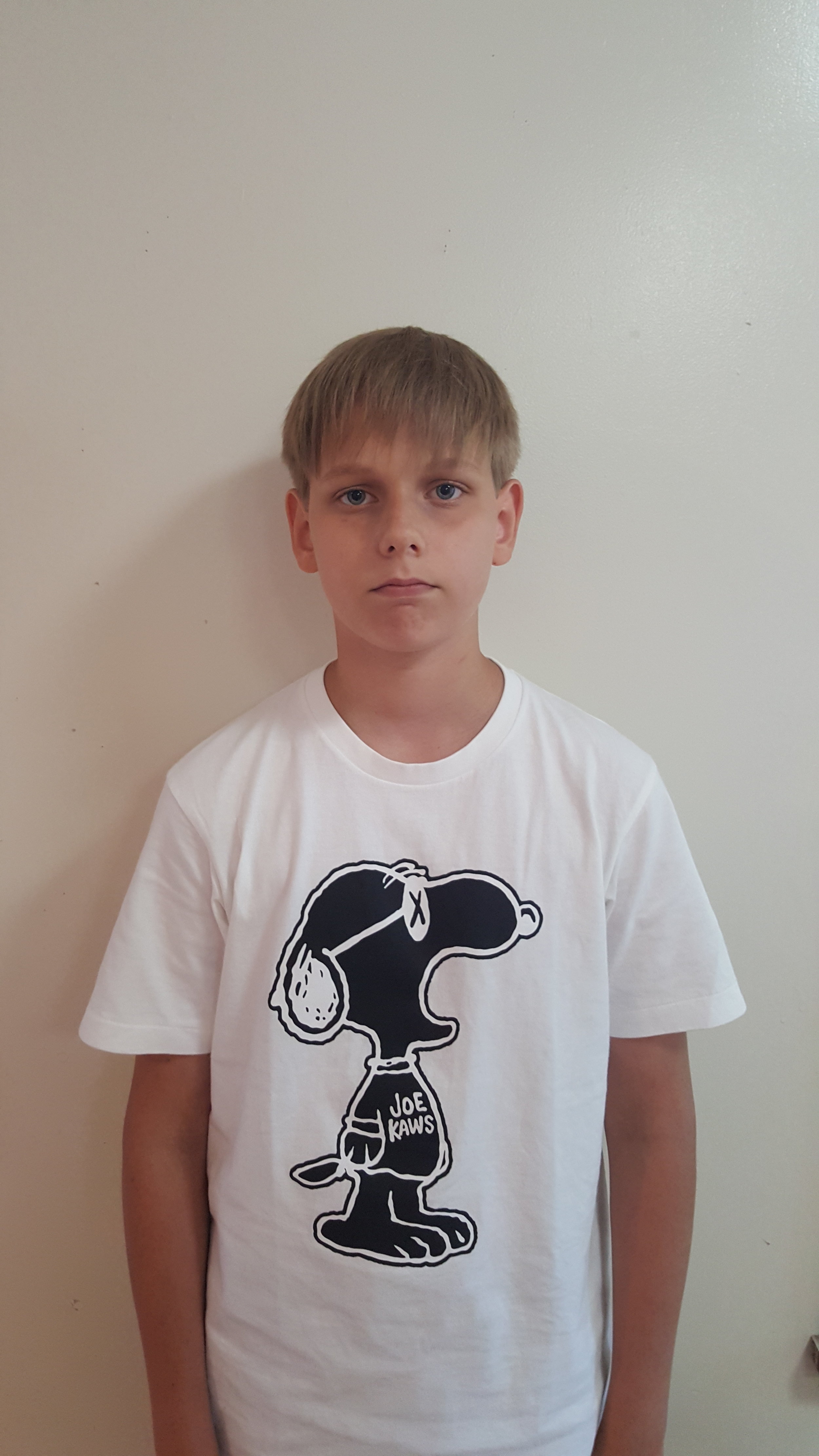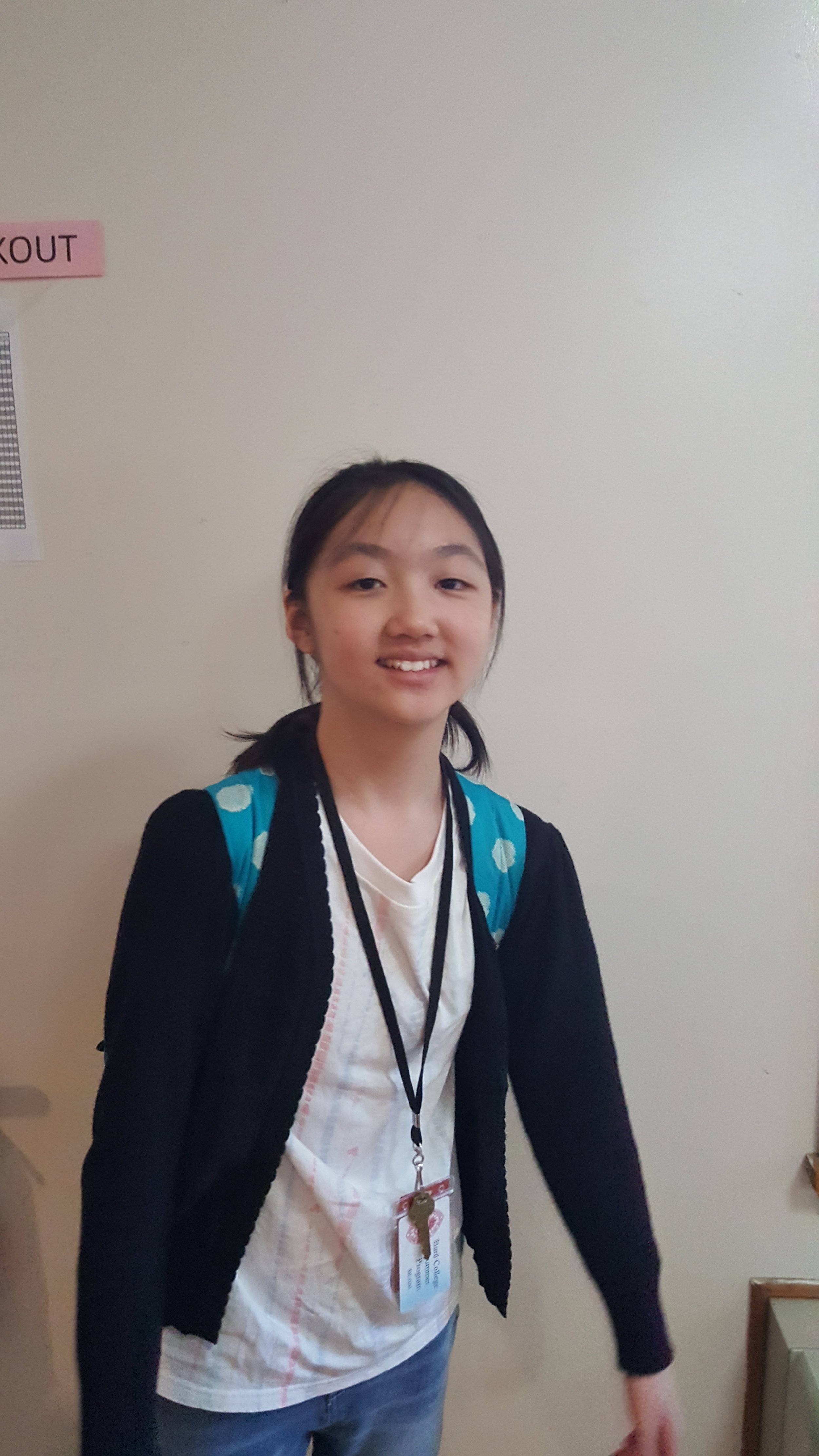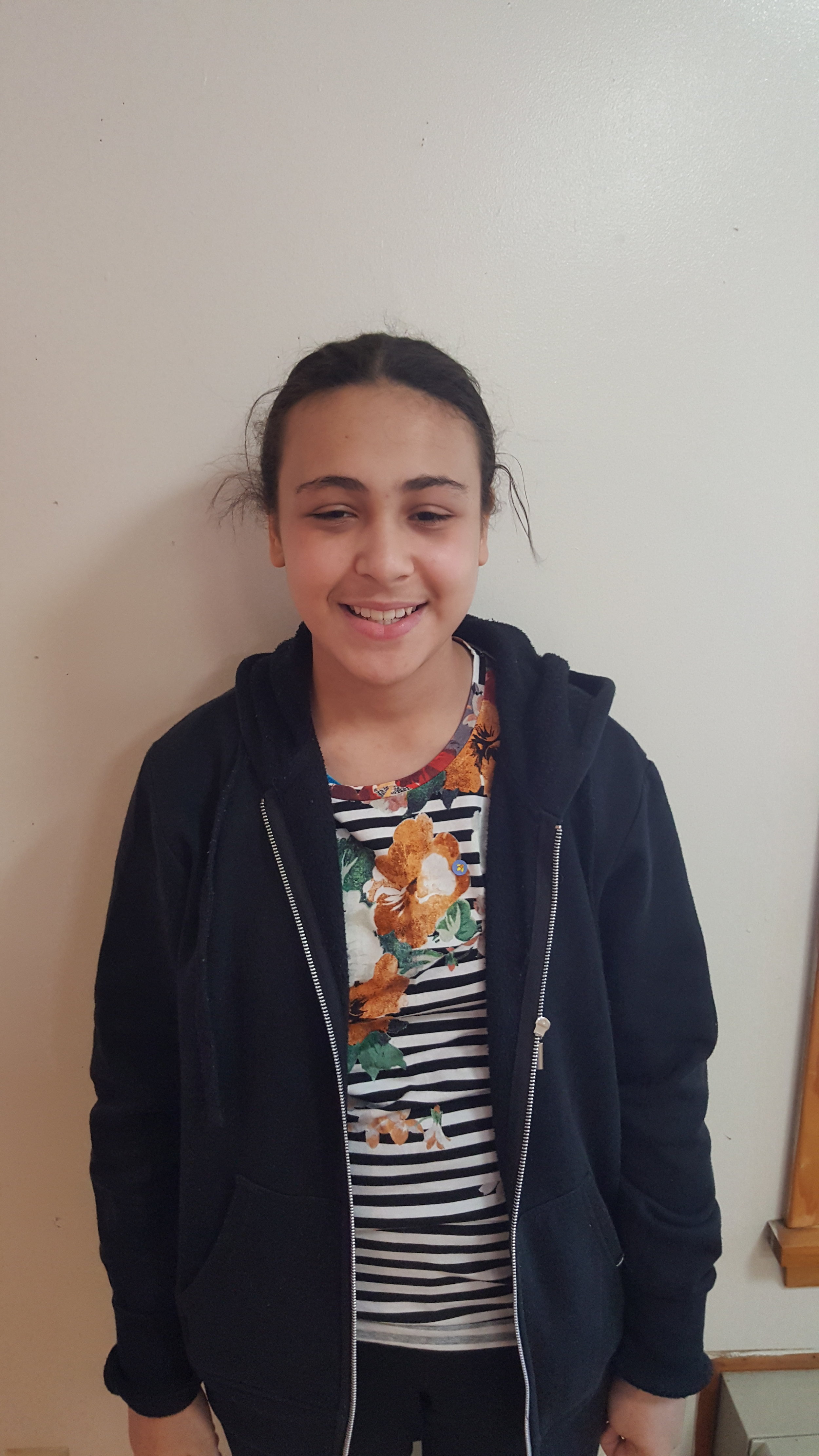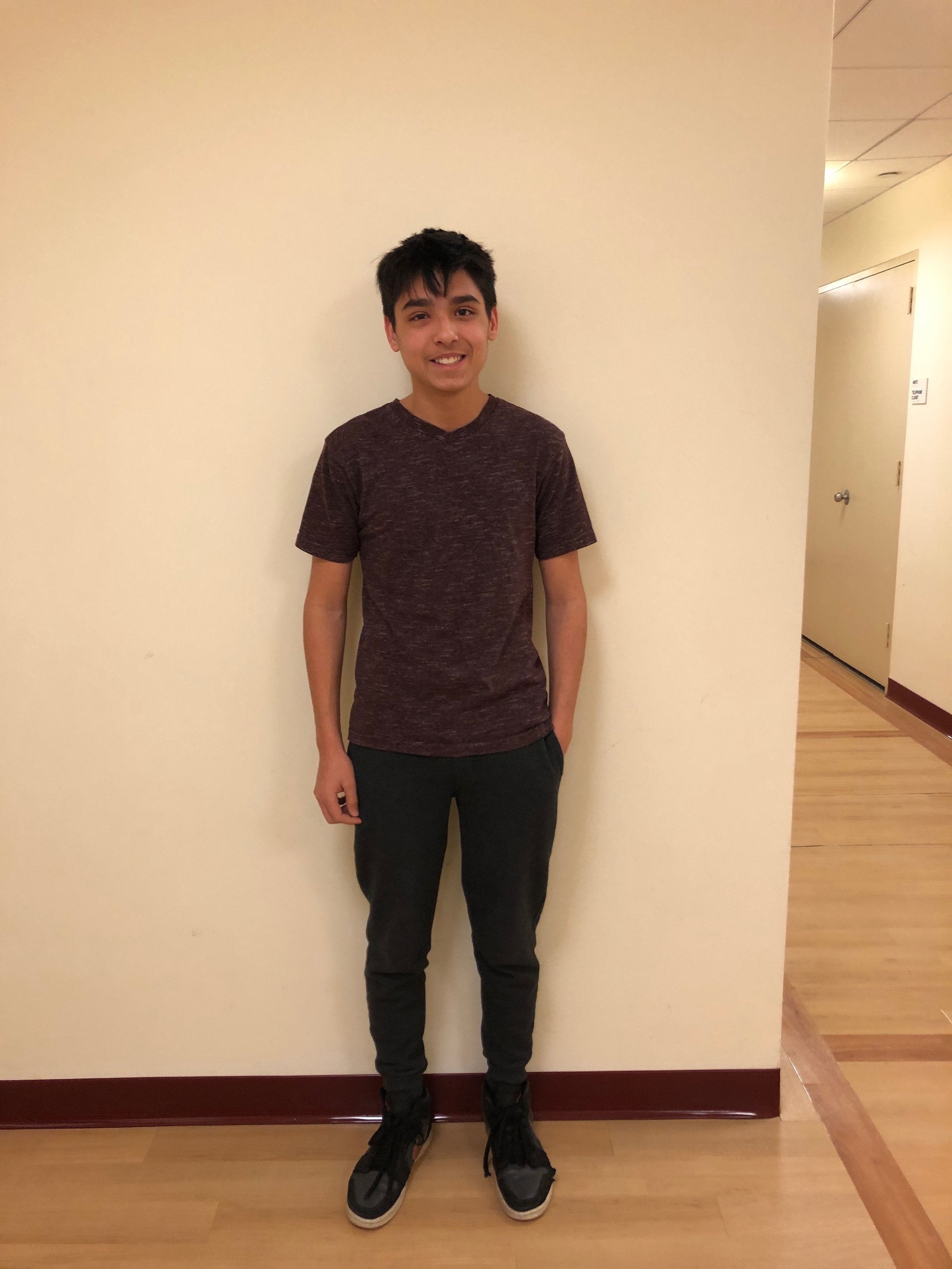Po-Shen Loh, mathematics professor at Carnegie Mellon University, coach of the U.S. Math Olympiad team, founder of Expii, and self-professed math enthusiast, takes the stage at BEAM 6. His audience is the nearly one hundred 6th grade students that make up BEAM 6's Uptown site, along with their counselors, a mix of college students and high schoolers, and the faculty and staff members that run the program.
Po-Shen exudes energy, and it is clear that the BEAM students are prepared to match his exuberance. When he calls for four volunteers, there is an immediate, delighted clamor to be chosen. Amid a tumult of waving hands, the four lucky ones join Po-Shen at the front.
The student volunteers stand on the stage, two on either side of a waist-high table. Each pair has one die between the two of them. Each person has one responsibility. One of them will role the die, the other will check the number for their team. The rules of "The Game" are simple:
- Each team has 4 rolls.
- After each roll, they switch dice.
- After each roll, they add their number to the numbers previously rolled.
- Whoever has the highest sum at the end wins The Game.
Po-Shen along with Nashle, Crisbelly, Angel, and Amire
Is The Game fair?
Po-Shen drops the question like a firecracker. The room explodes with excitement.
Ideas dance like dice. Laughter bounces, loud, off the walls. Counselors smile and gently shush. Po-Shen grins and throws his arms outward in a gesture that embraces the raucous enthusiasm. He brings his hands together drawing the room back to focus, channeling the bountiful energy, creating a space for solutions to be spoken.
Hands shoot up like rockets. He sifts through, shifting from one student to another, piecing together a pattern, a picture. He grabs a question from one student, an answer from another. All of it guides us towards unraveling the mathematical mystery of whether The Game is a fair one or not.
But scarcely have we settled on an answer to that question, when Po-Shen poses another.
Could there possibly be a strategy to such a game?
Strategy is such an intriguing word. It practically brims with adventure. But how could dice be thrown with strategy? Arenʻt dice devices of chance? What cherished games might be upended by the notion of a strategic dice throw?
Po-Shen introduces a key element to The Game as he is playing it, which changes the strategy. Have students noticed anything about these dice? How are standard dice constructed? Students note that they tend to have numbers that sum to 7 on opposing faces: 1 is directly opposite 6, 2 is opposite 5, 3 is opposite 4. Why? It turns out that Po-Shen has dice with 1 facing 2, 3 facing 4, and 5 facing 6. How does this change the game? Why did Po-Shen manufacturer such dice? (We'll leave that question open for you to figure out, but it turns out that the answer transforms this game from a game of chance into a game of strategy.)
Some of the BEAM students in the room were especially intrigued by the strategies that Po-Shen explored with them.
Amire, one of the four BEAM students to play the game, said "I was amazed that there was a strategy. That really amazed me." In fact, when I asked him what his favorite thing about the talk was, he answered, "Learning the strategy. Now I know how to win Monopoly."
Deanna
For Deanna, one of the BEAM students in the audience, the element of strategy was also memorable. "It was interesting, because he talked about strategies. It was complex because it was something I personally didn't know about." In talking about Po-Shen, she says, "He was interactive."
Po-Shenʻs excitement as he shared his game, his questions, and his strategies with the students was tangible. Ultimately, what he communicated was a genuine love for mathematics.
Amire, who grew animated just as he recalled the talk, said this about Po-Shen: "He is really good at math and he likes it." Amire contrasted this with people who may excel at math, but donʻt enjoy it. The fact that Po-Shen enjoyed his work as a mathematician was not only evident to Amire, it was important.
As he spoke to us, Po-Shen himself looked beyond skill in mathematics. While his confidence in the mathematical prowess of his audience seemed as clear as his beaming smile, he closed his talk asking for even more than that.
"Math is power," he said.
"Now that you have great power, you must use it for good."
